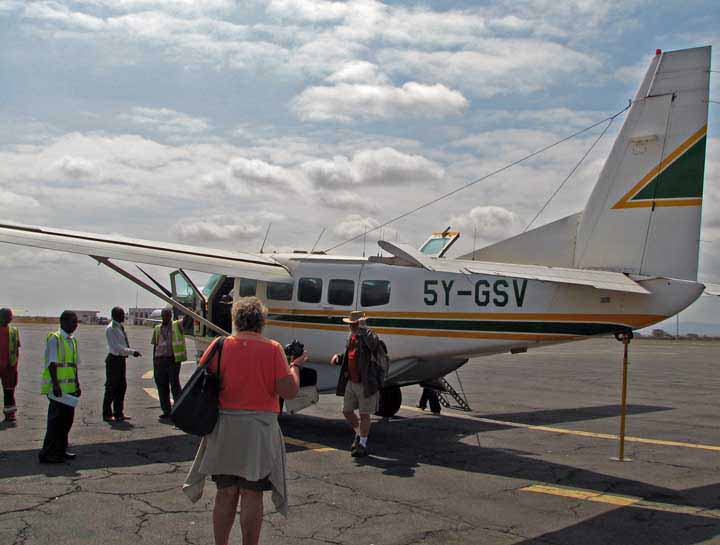
On to Tanzania
Arusha & Tarangire National Park
Tarangire Sopa Lodge
Getting There
And where we almost lost Jackie.
First, we were told to "pack down", as there were weight restrictions on the airplane were were to take and we could leave the excess luggage at our hotel. We get to the airport. I'm not going into all the difficulties we then encountered. Suffice it to say the plane was overbooked.
It would be able to fly 11 fat American tourists (speaking for myself) and all their luggage if we split up and took one plane now and one a couple hours later. No way!
As there was a VIP type who absolutely had to go on this flight, one or more of us had to volunteer to stay for another flight. No way!
Negotiations went on for what seemed hours! We wouldn't give an inch!
So, in the end, they packed, and I mean packed, twelve of us, and all our luggage on this single engine aircraft.
Heard of dancing cheek to cheek? Well, we were flying, seated "cheek" to "cheek", in an overloaded equivalent to a Piper Cub.

Was I close to the pilot and co-pilot? Check these pictures out. No need for a speaker system, he made announcements by turning his head. A question? I just tapped him on the shoulder.
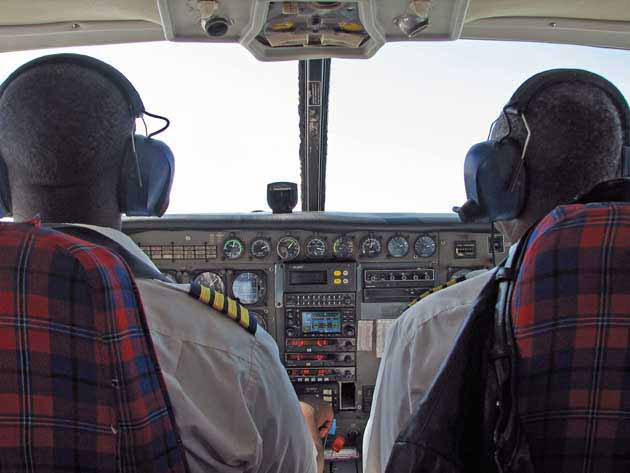

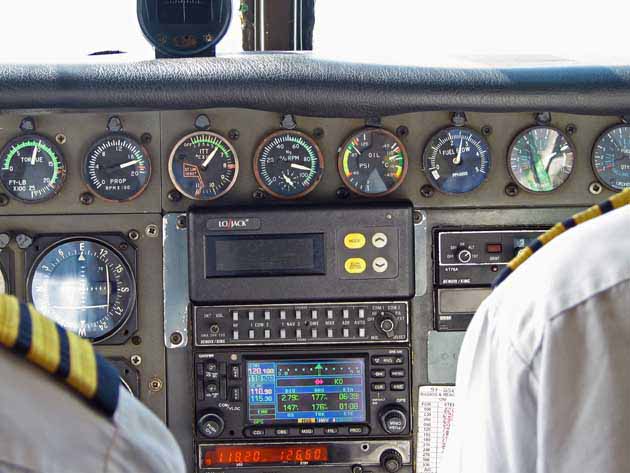
I took the close up on the left because the GPS system was a Garmin GPS - when it came up, the screen had a message that indicated it was due for an update - in 2003!
We climbed during the entire 2 hour trip - never exceeding 185 mph, and never making (although the poor engine tried) it to 12,000 feet.
To our left we saw Kilimanjaro. I tried to take pictures through the pilot's left window. Knowing that they probably wouldn't come out (the pictures, not the window) , the young lady to my left volunteered to try through her window. (did I mention there were only three seats in the front row?) I don't think they're great, but how many people have shots of Mt. Kilimanjaro at 11,000 feet?
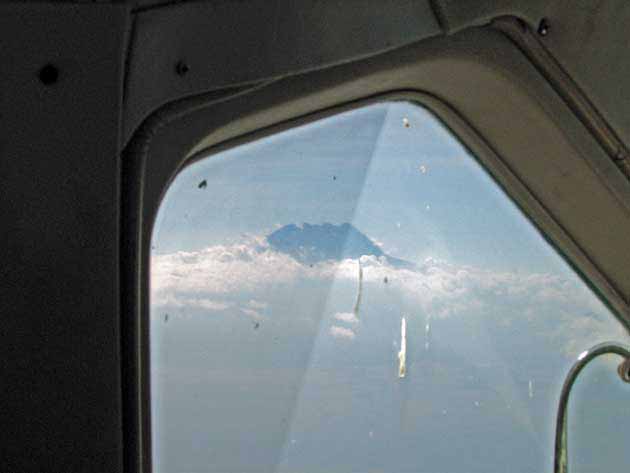
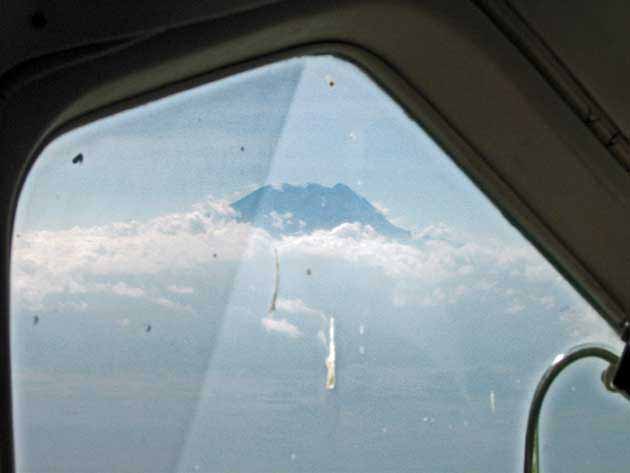
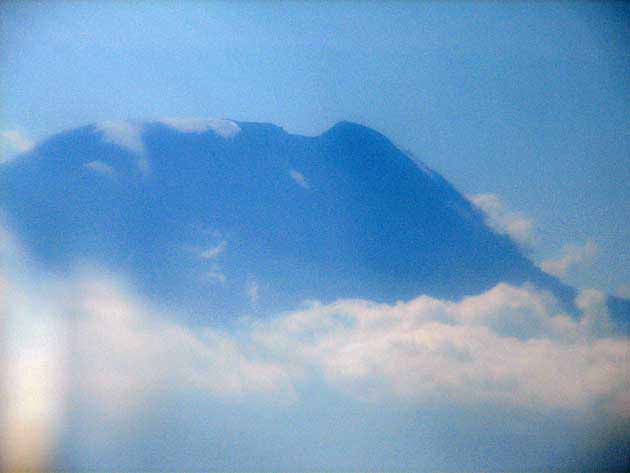
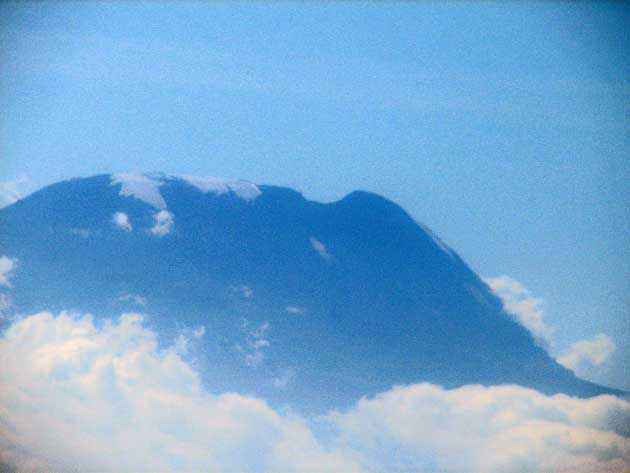



And we arrive at Kilimanjaro Airport in Tanzania.
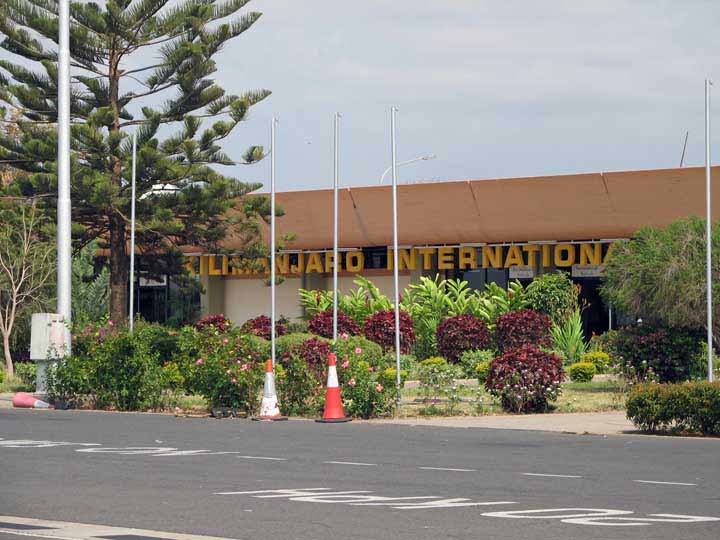
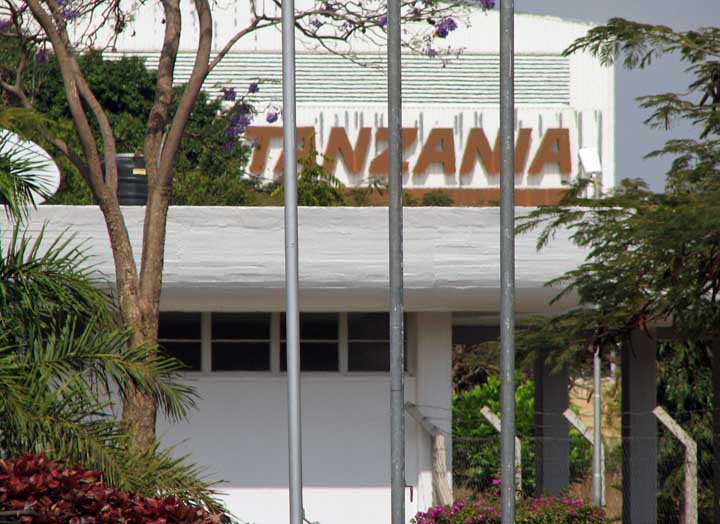

Wow! If we thought Kenya was dry, we were in for an unpleasant surprise - Tanzania simply had no water.
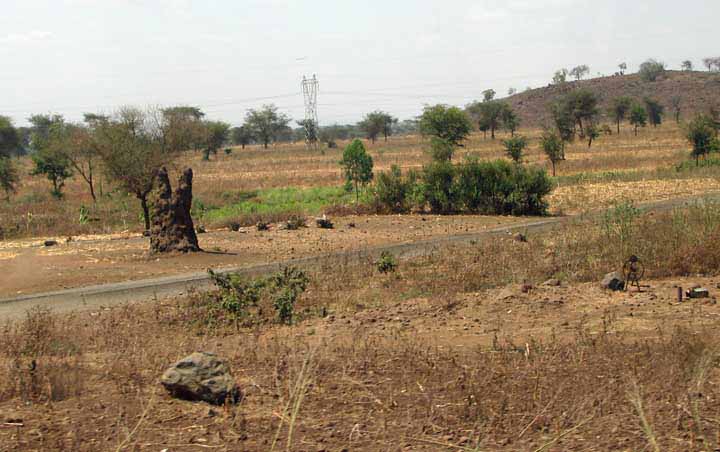 Notice the terraced fields on the hill
Notice the terraced fields on the hill
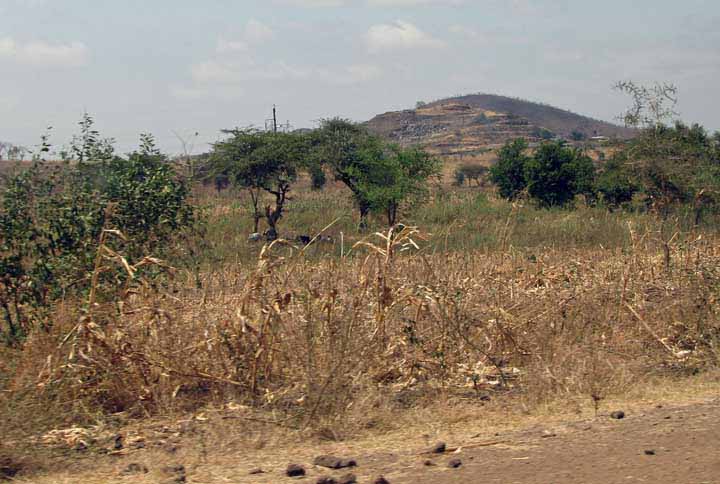
Here they are making adobe
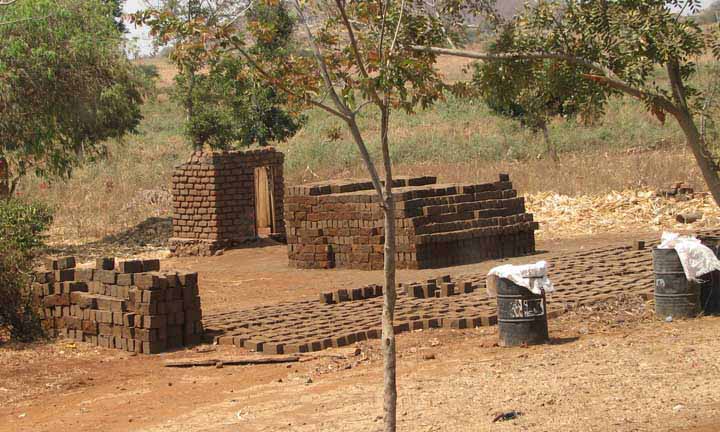

To the right you will see brick making. The stack of bricks
on the left side of the picture is a free-standing, self-cleaning
kiln. They make the kiln by stacking freshly made bricks in a special pattern, in and around firewood. When the interior is done, they surround the mound with firewood. After being set afire, the kiln burns, glazing the bricks. After a couple days, when it cools, the bricks are ready for use.
A stack of bricks ready for use.

I found the strangest thing - while half completed and finished brick buildings about the size of homes or small businesses were fairly common, not one was occupied! Many brick structures sat unfinished and / or vacant. Never found the reason.
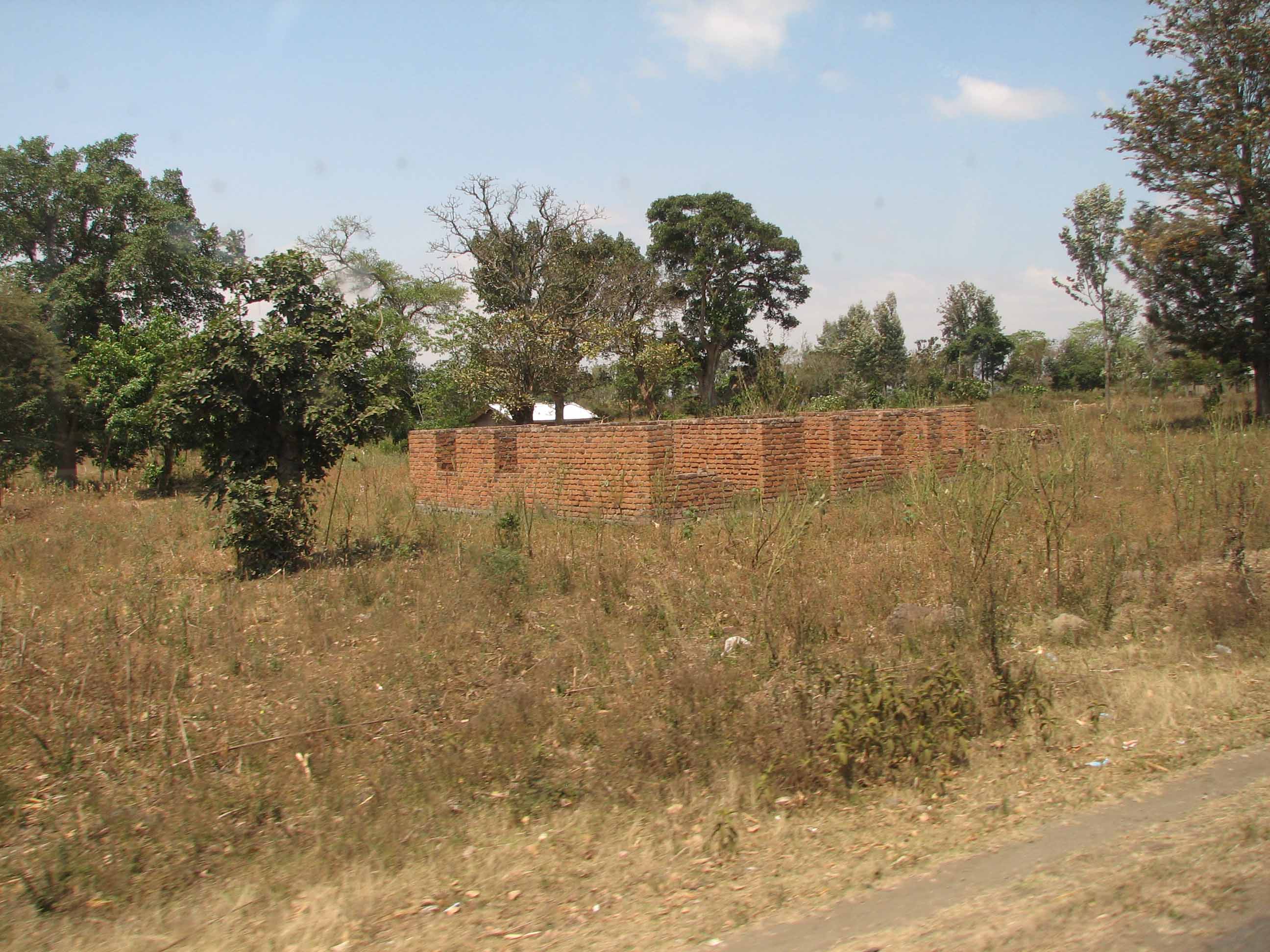
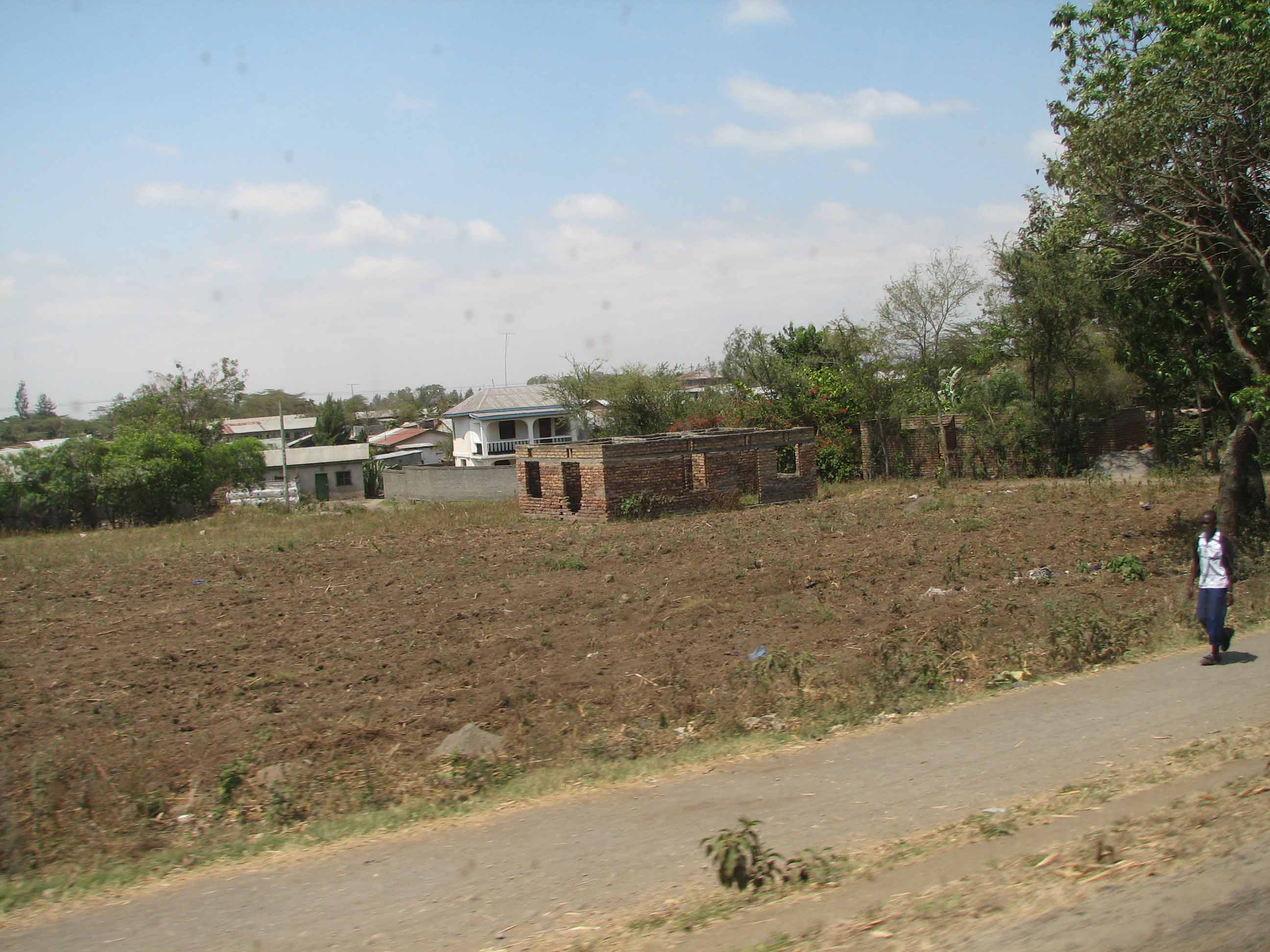
One of the many fields of the famous Tanzanian coffee -please remember these pictures of fields and such were taken from a moving vehicle, at speed - as we were on decent roads now in Tanzania.
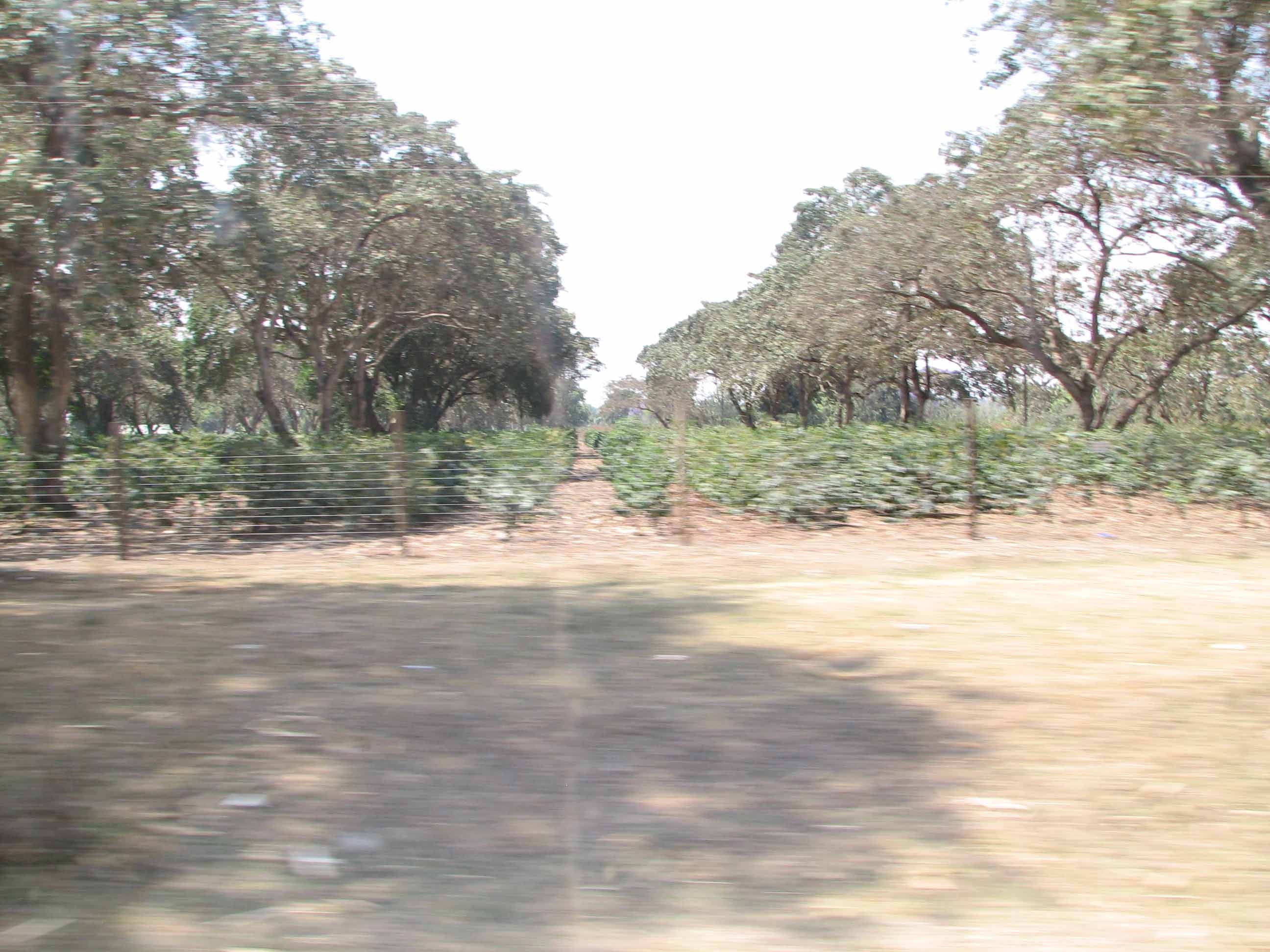
I didn't know that rice was grown here. Just how, in this drought, I don't understand.


Corn from the local field just behind, sold at road side.

Fields and fields of the very largest, beautiful bananas we have ever seen
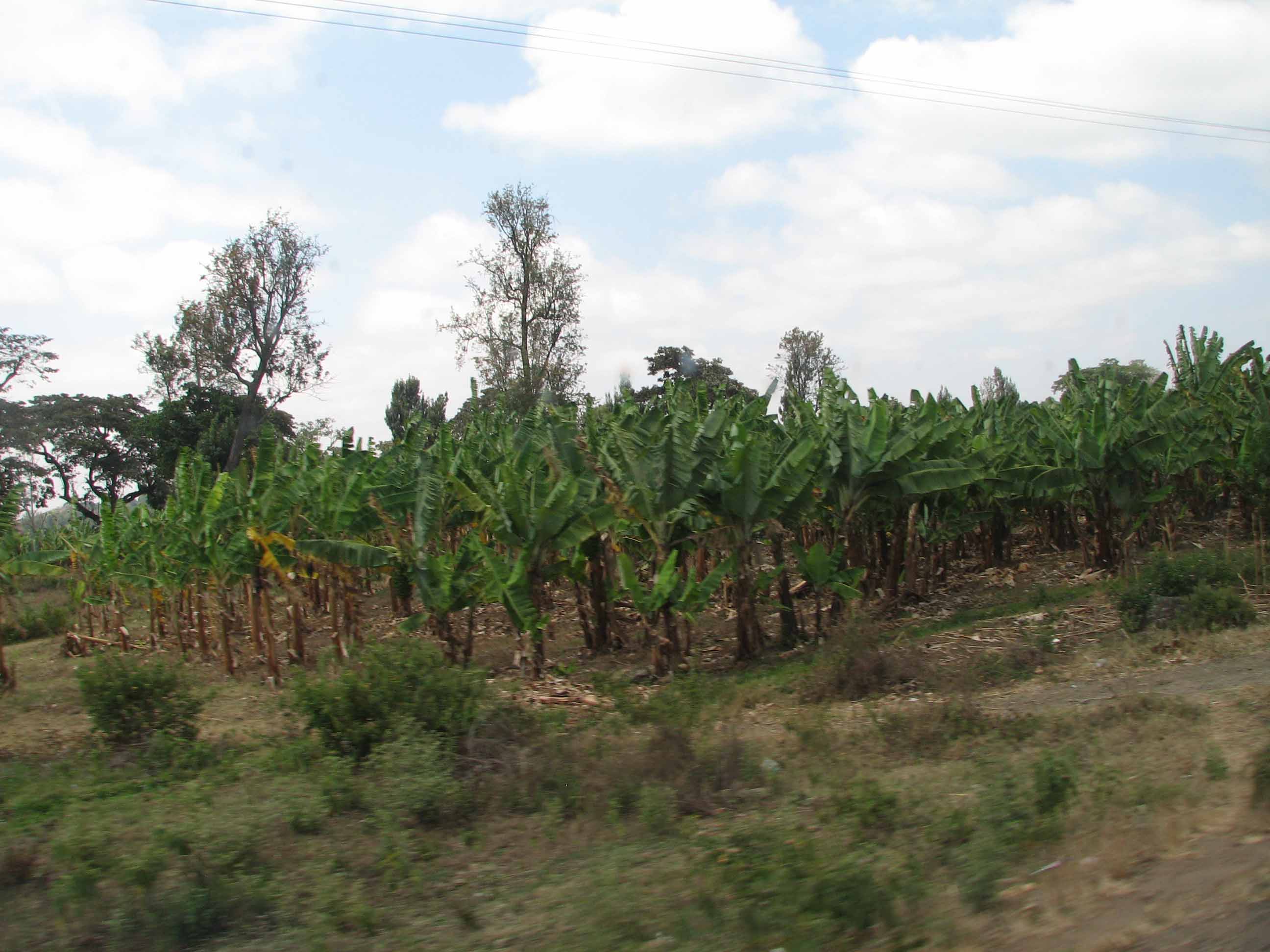
Crops being sold along the road near roadside stores.
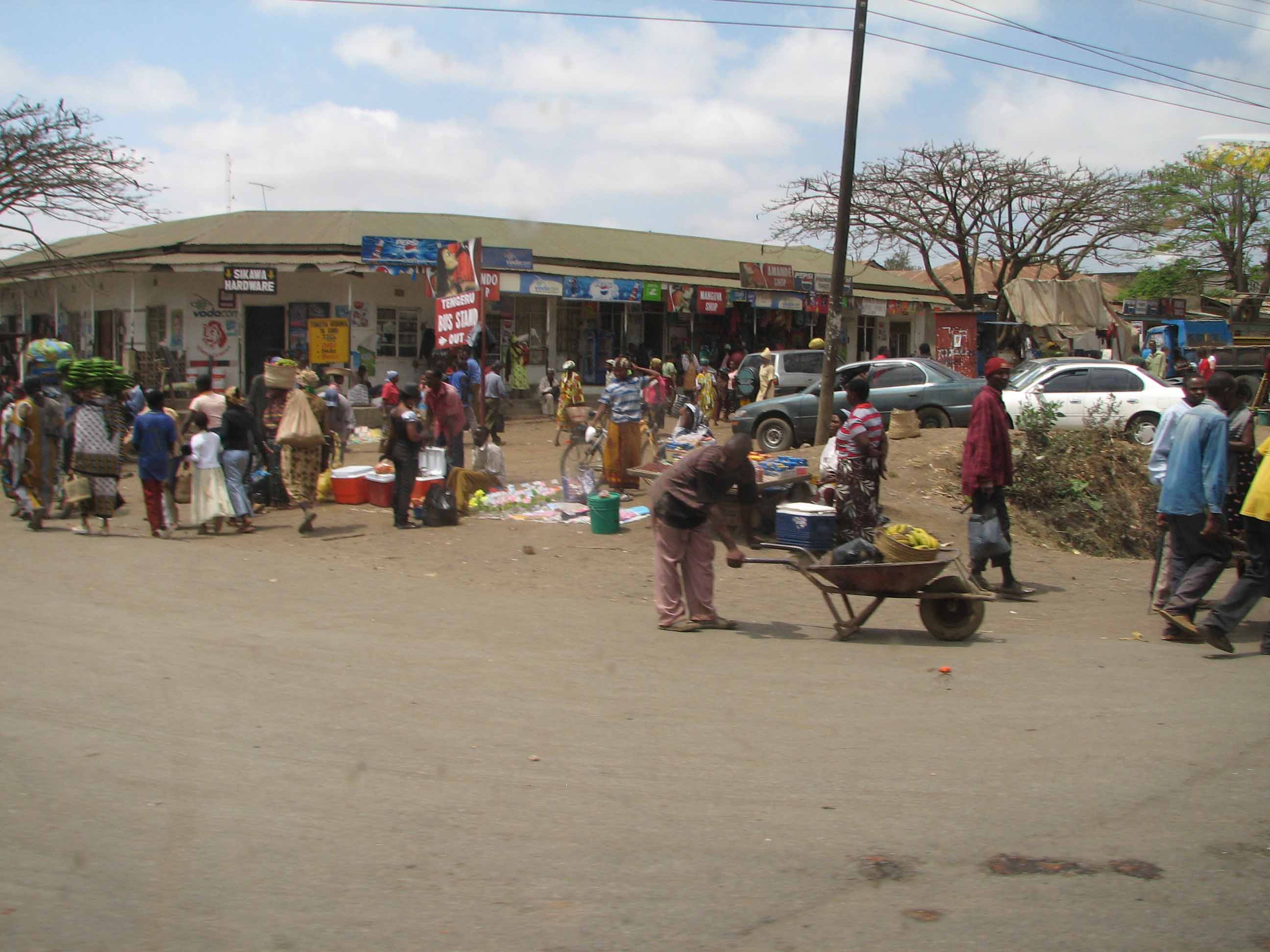
Although they have cars, they are washing buy hand in the front yard.

More coffee fields
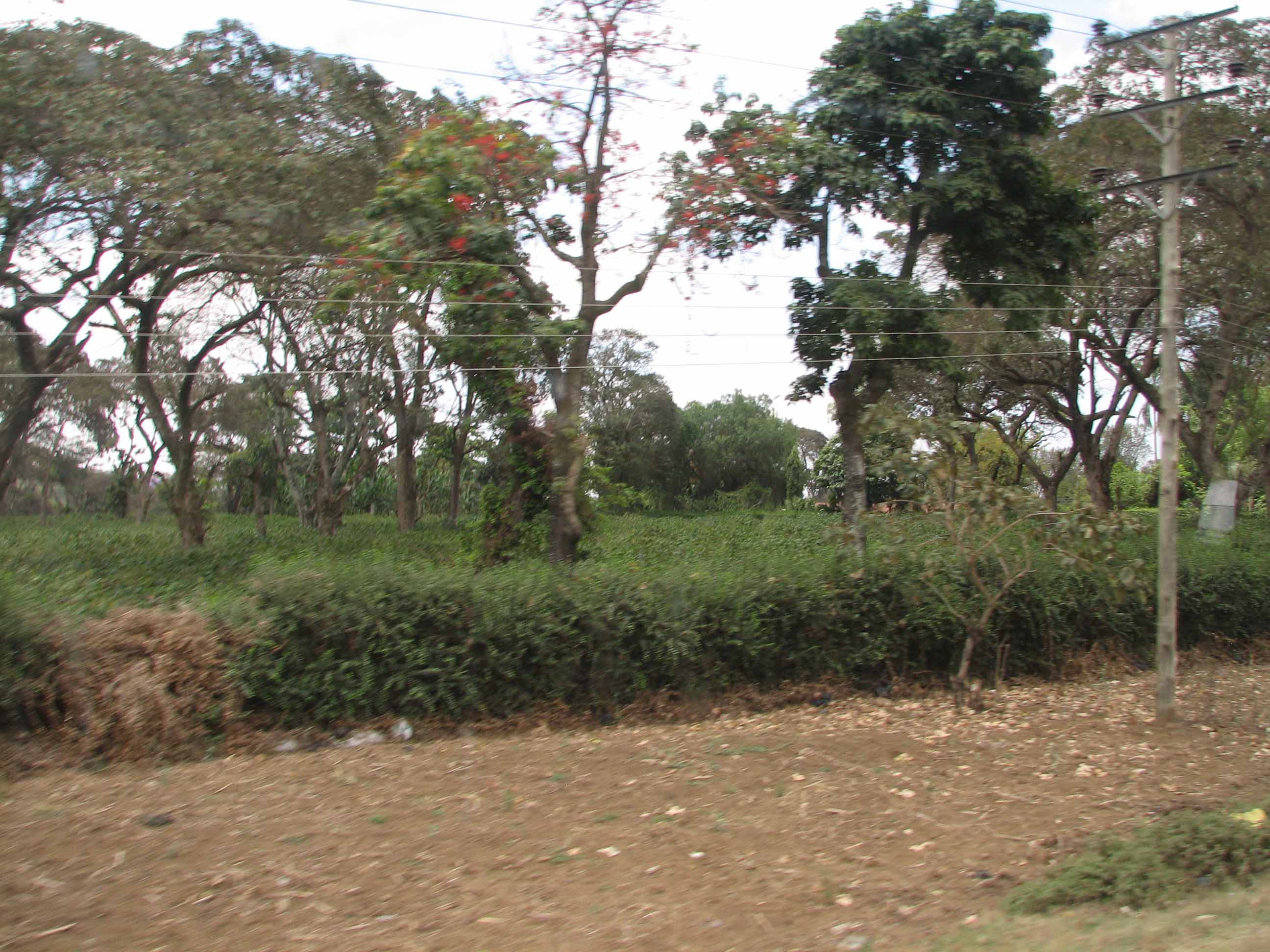
Making cinder blocks - so we have adobe, bricks and cinder blocks all being made locally - by hand
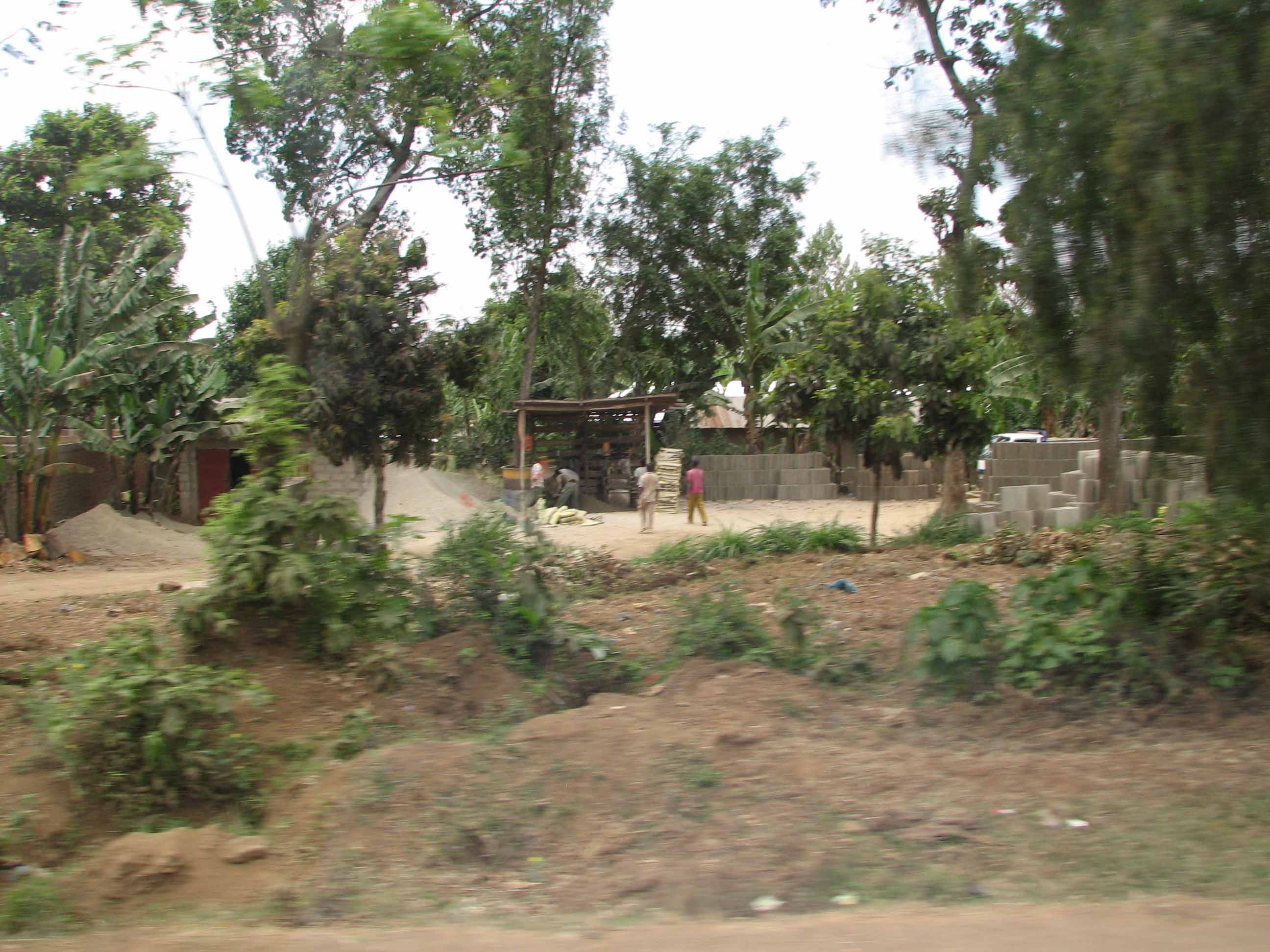
As we got through a city we see this sight.
It is the site of the Rwandan Criminal Tribunal.
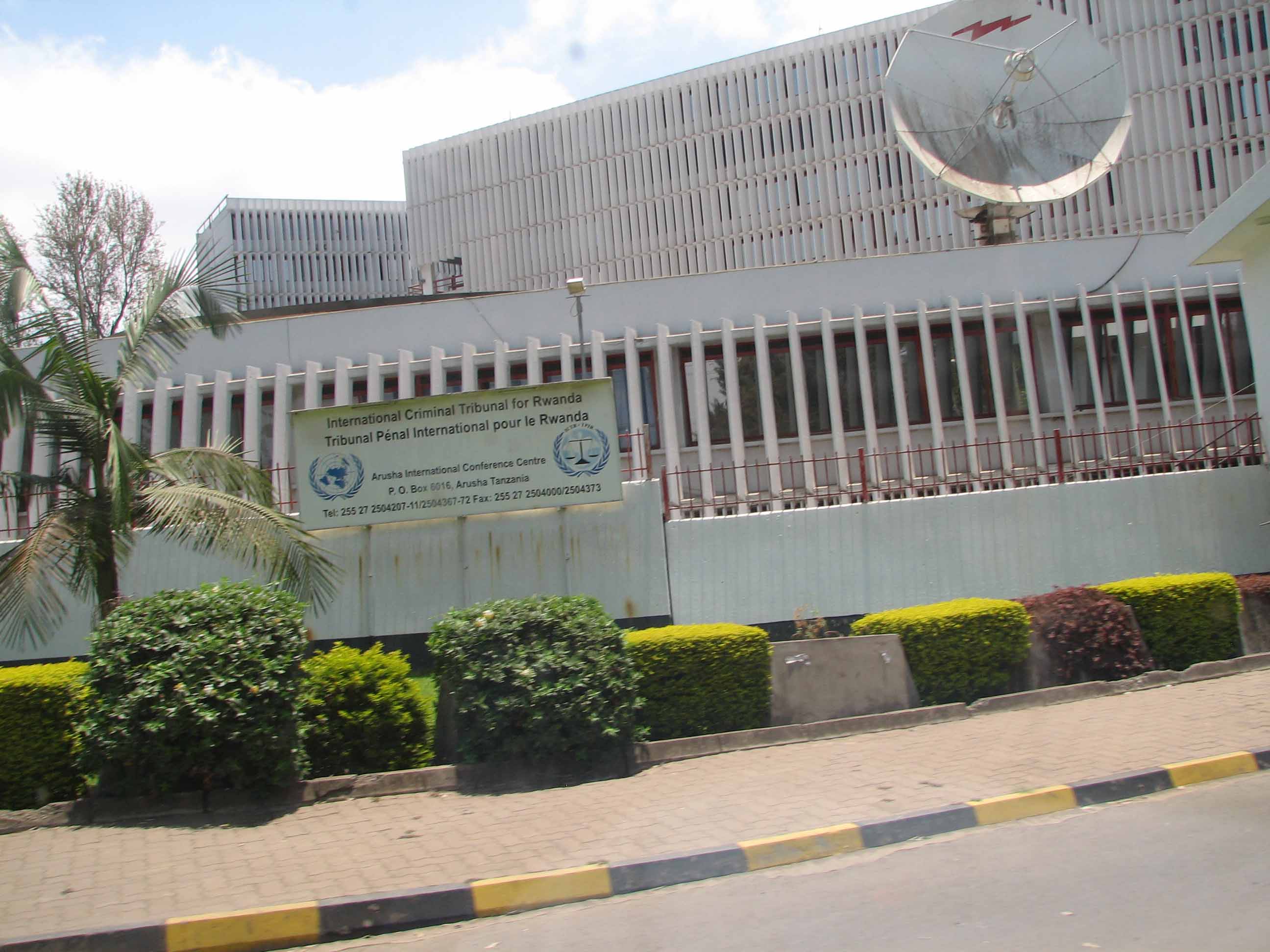
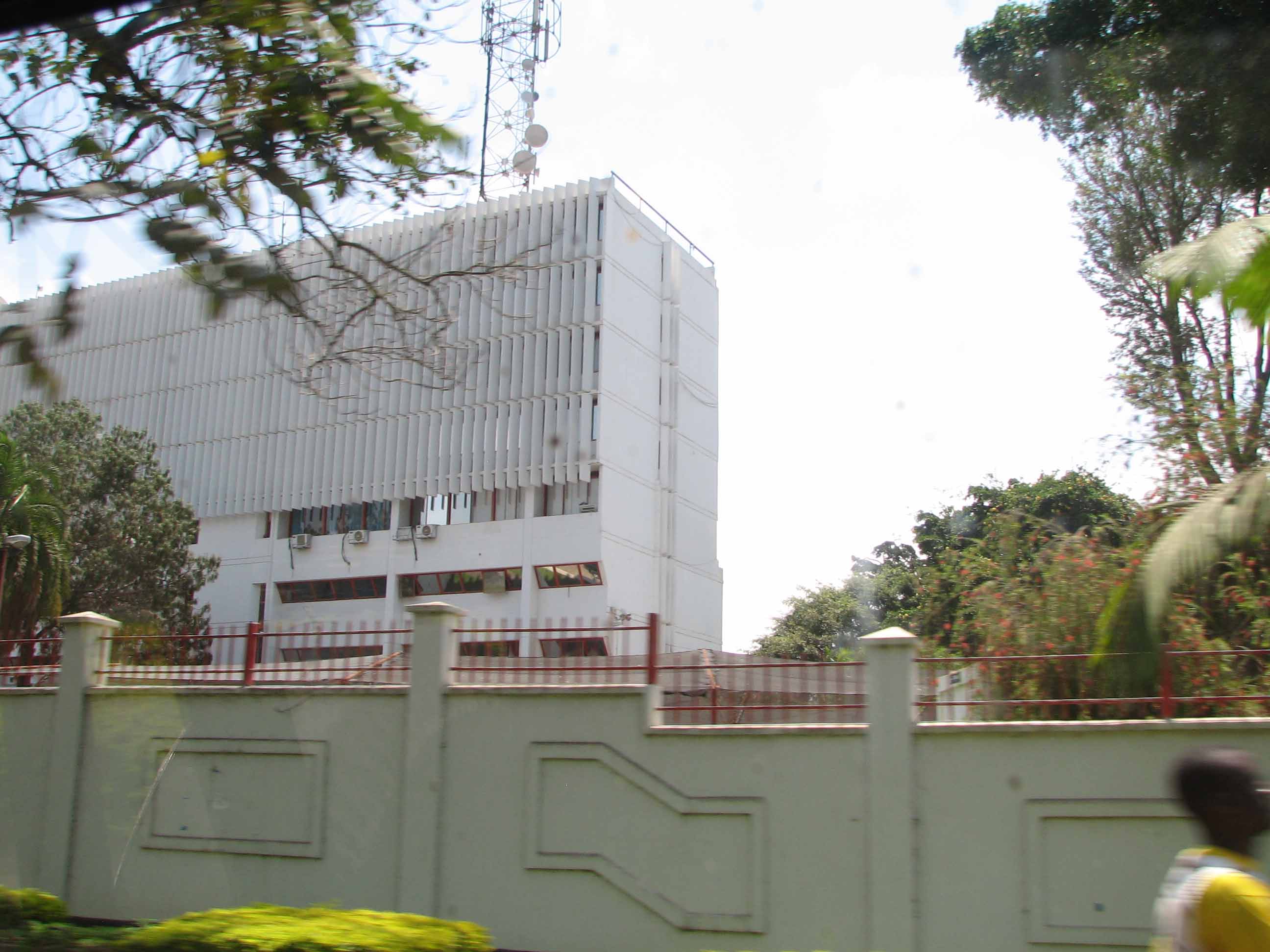
This is the only shot I got of the African Cultural Museum.
Evidently this is a new attraction.
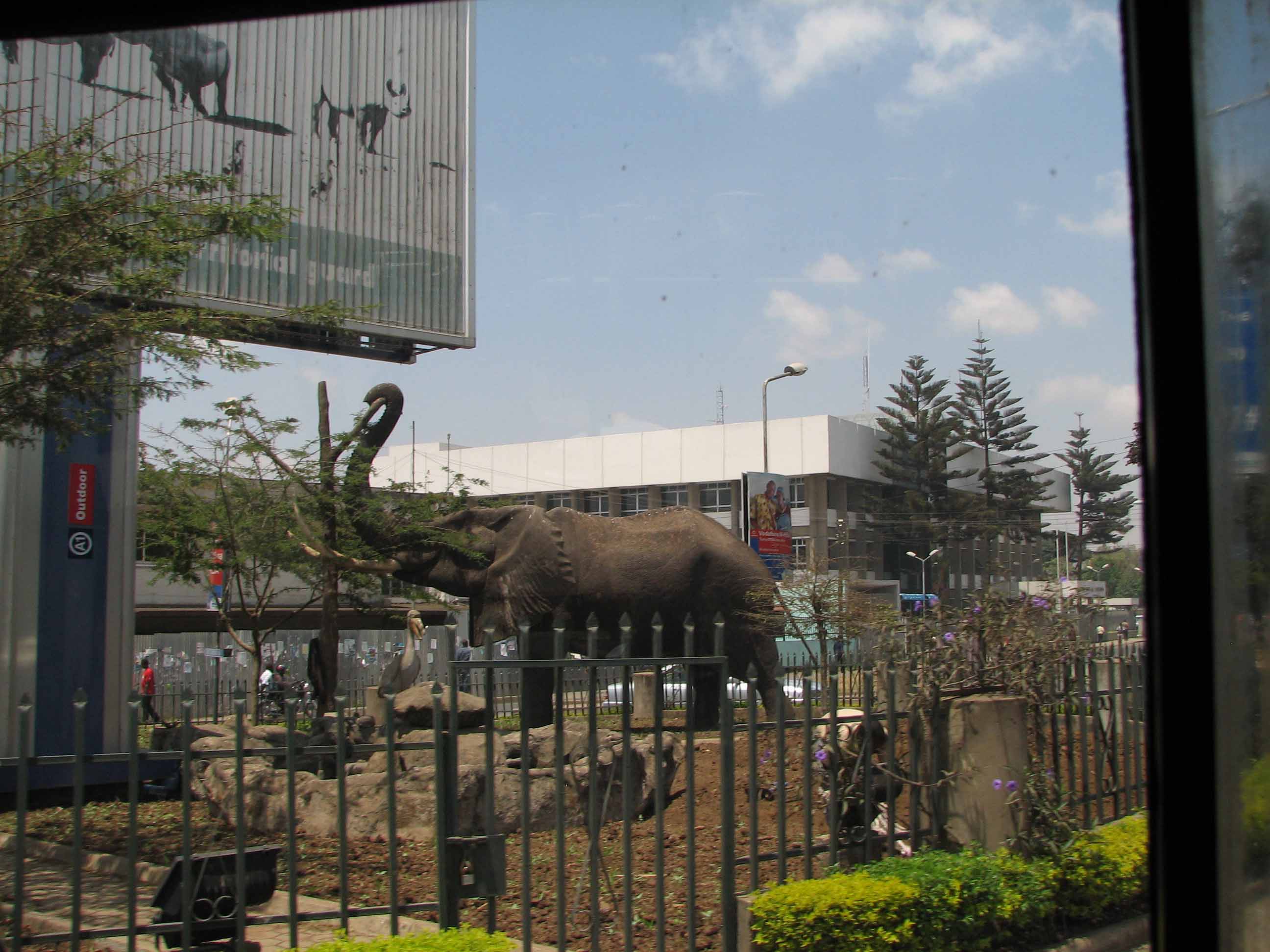
This is the lower part of a Peace Monument

I took this horrible picture (again a moving vehicle) because I had heard of some African women "carrying their wealth on their ears". I saw several example, but this is the only picture I could get. The three women central to the picture have very long, wide earrings of silver and gold. These earrings are the equivalent to money hidden under the mattress - their bank accounts.

Leaving the city, out in the parched plains

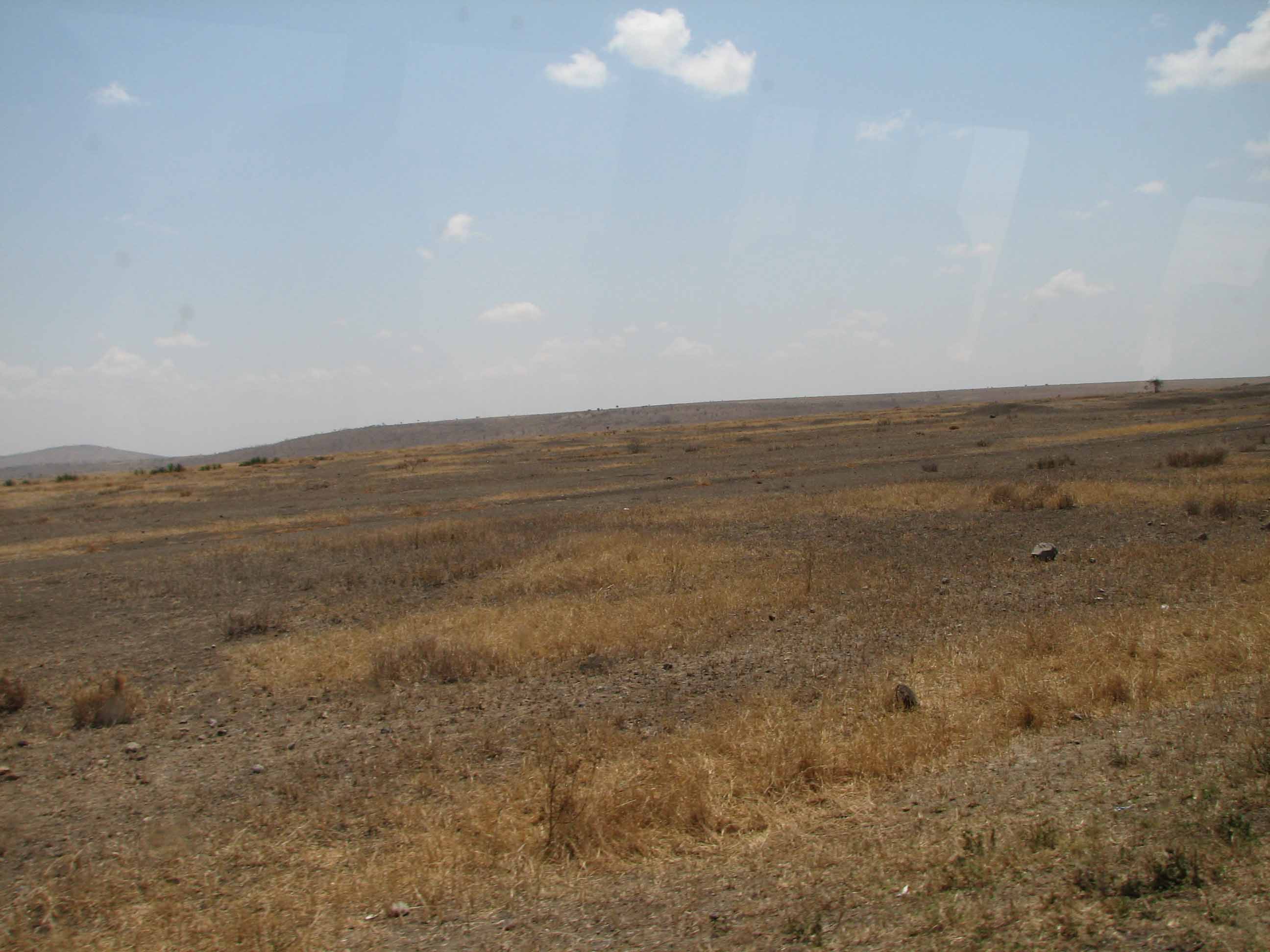
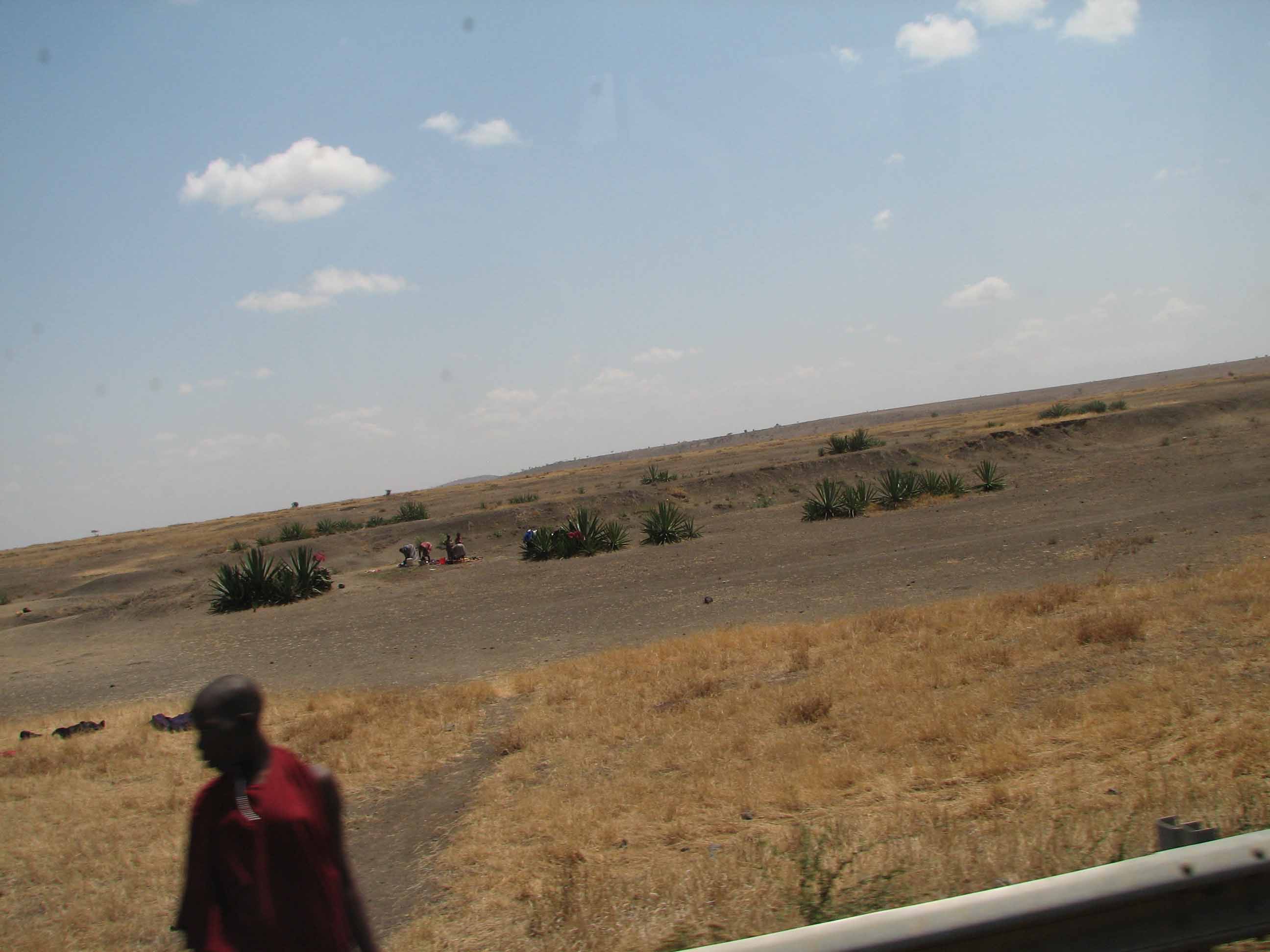
A dried up watering hole. There's a small pool of water, about ten feet in diameter
and the Maasai women are washing clothes in it.
A herd of cows - notice the large amount of dust for
such a moderate number of animals being herded.

Some typical huts. As we go further in Tanzania, the huts are predominately
straw and branches covered with mud or cow manure, or a combination of both.
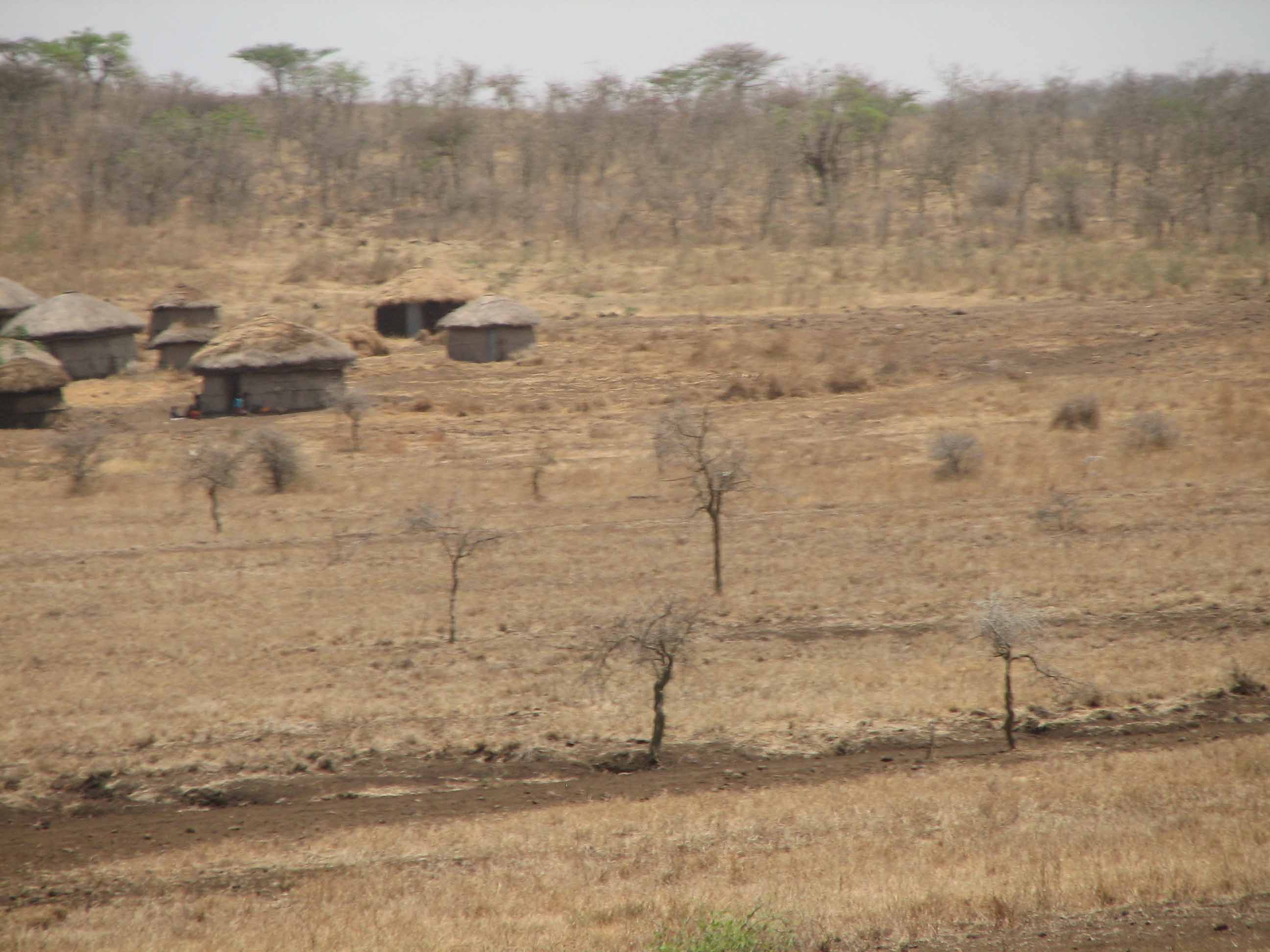

The dry, rocky, dusty scenes along the road.

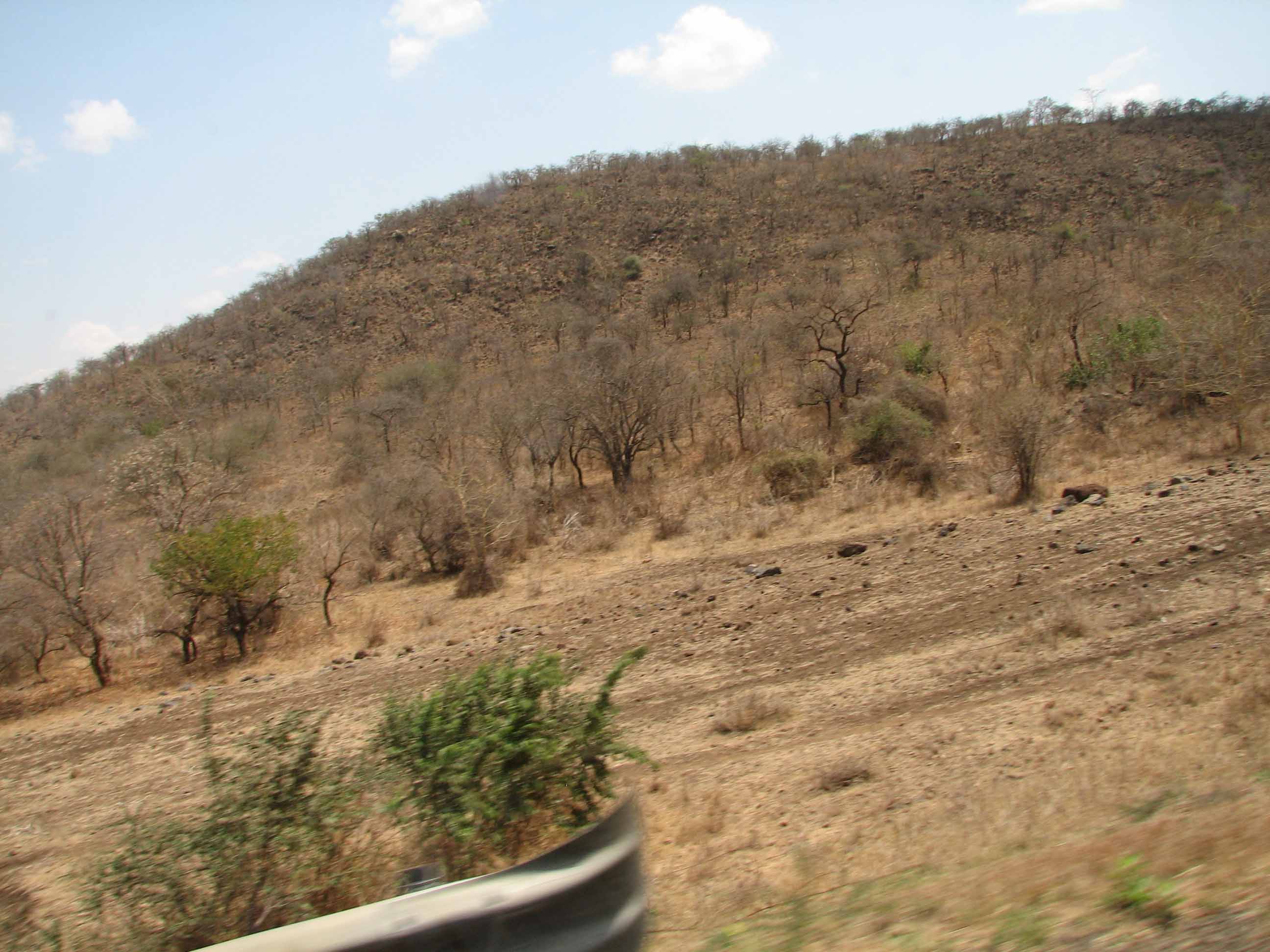


Market day in a small village
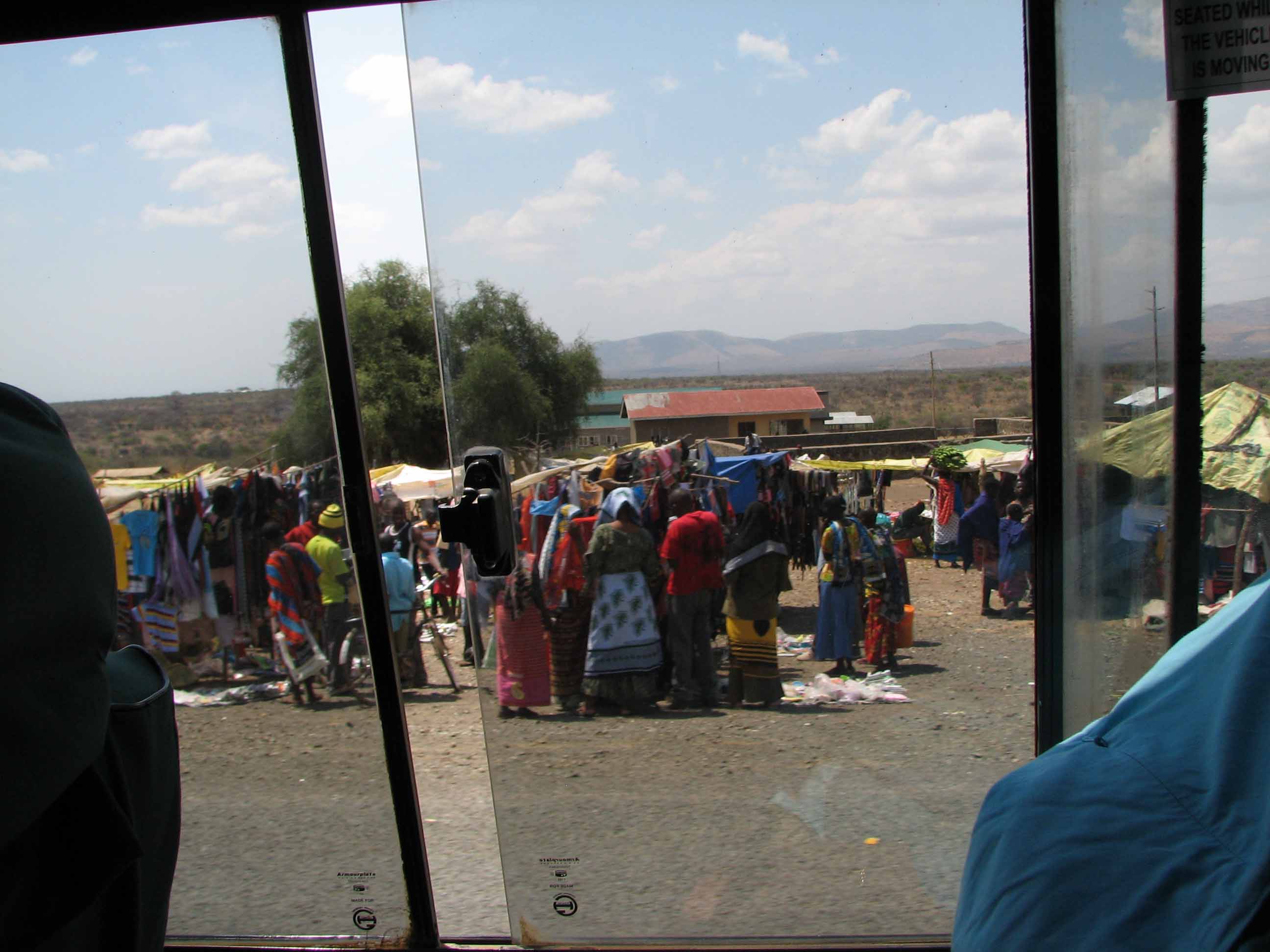
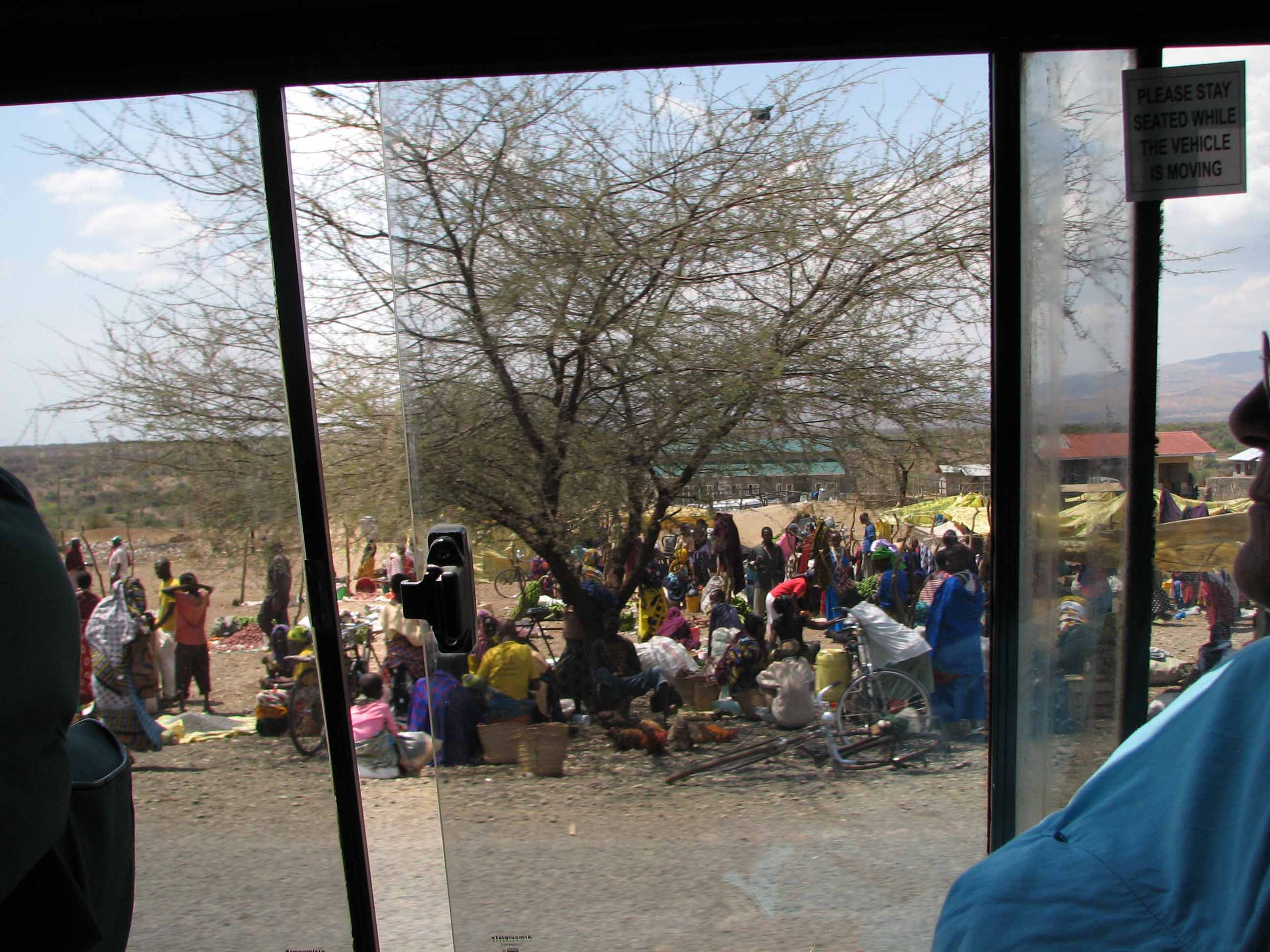
Something new. In Kenya tourist souvenirs were mainly carvings. Here in Tanzania we see any number of souvenir shops dominated by oil paintings. Now there were also carvings and such, and inside we found a growing number of beadwork offerings. The Maasai are famous for their beadwork.

And here we are - Tarangire National Park

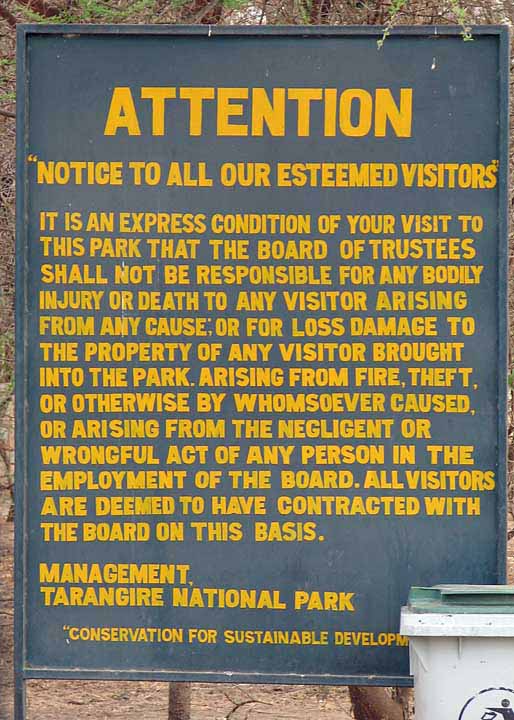
We were greeted immediately by the enormous boa bob Tree.

These were the first mature such trees we had seen.
One immature one was seen during our walking safari at our first stop in Kenya.
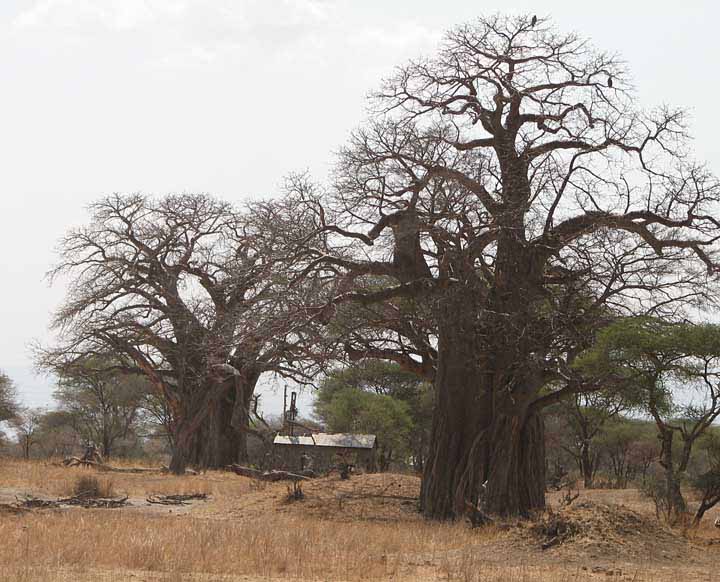
You can judge the enormous girth of these trees by comparison to the house
This reserve has between 5,000 and 6,000 elephants
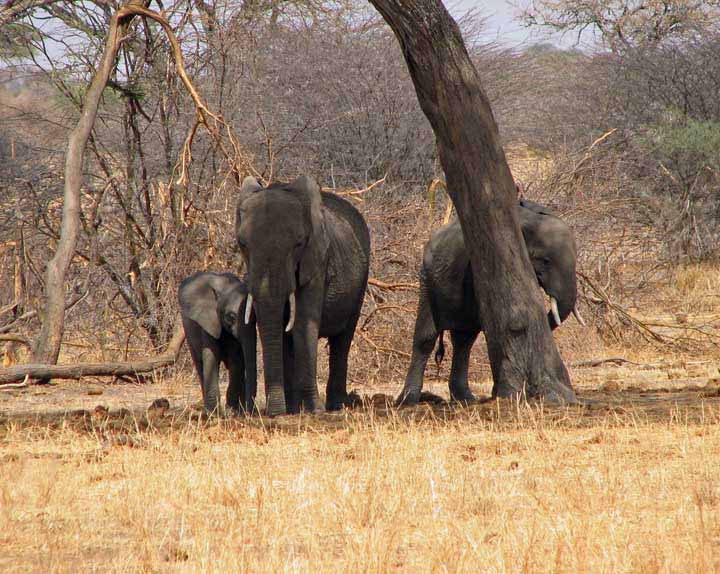
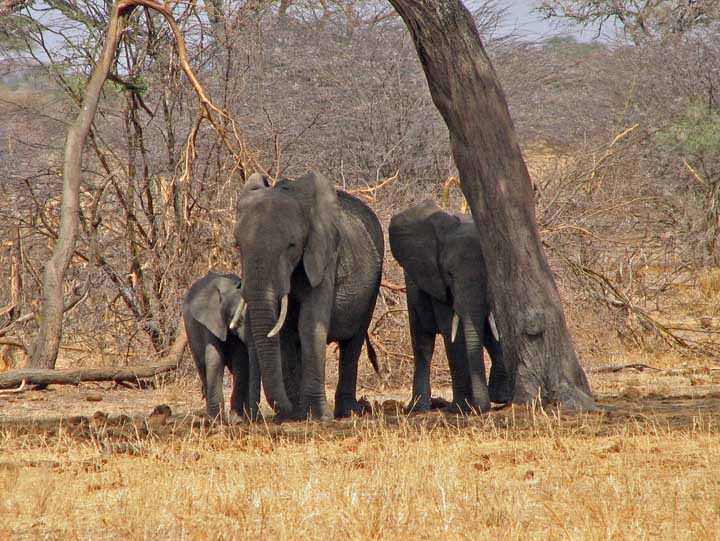
And fodder for the carnivores, by the hundreds

What - me worry?
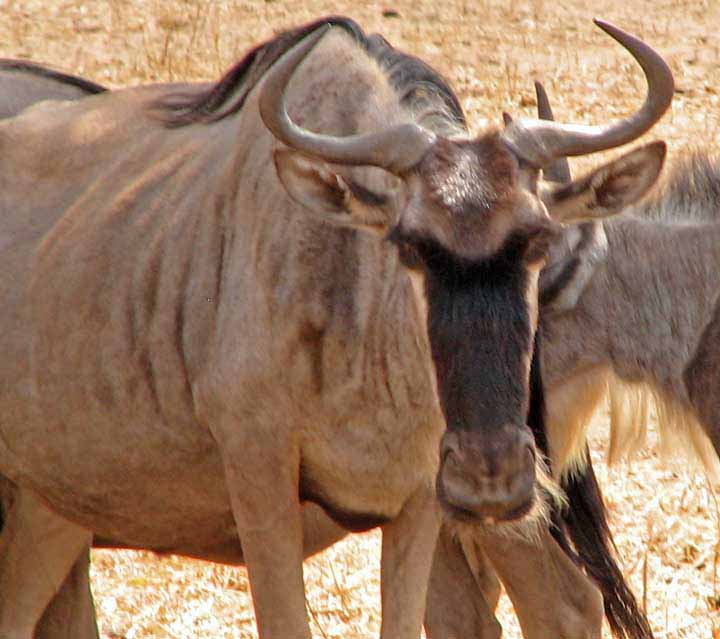
A waterbuck watches us
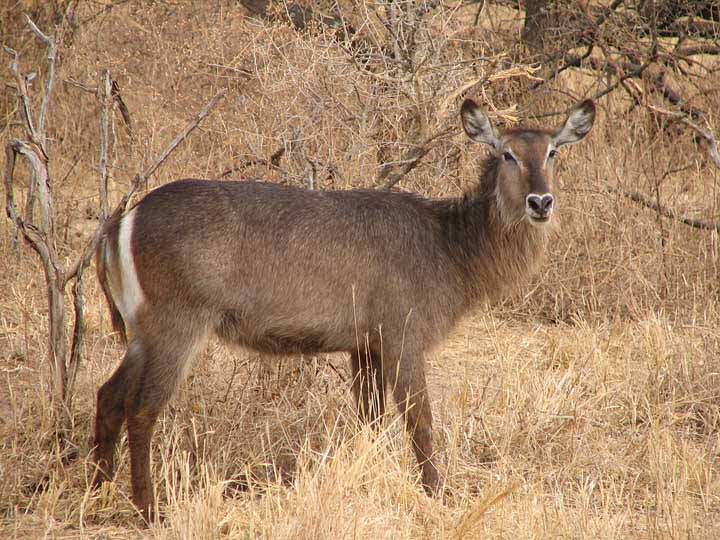
Wart Hogs on parade
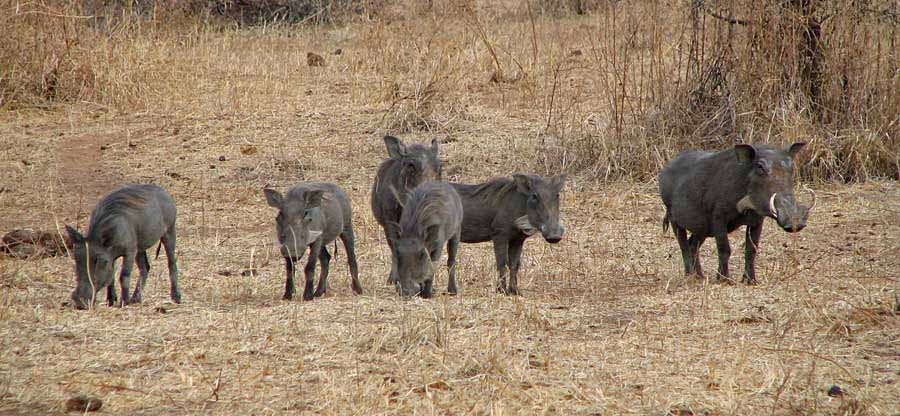
Dusty, dusty elephants


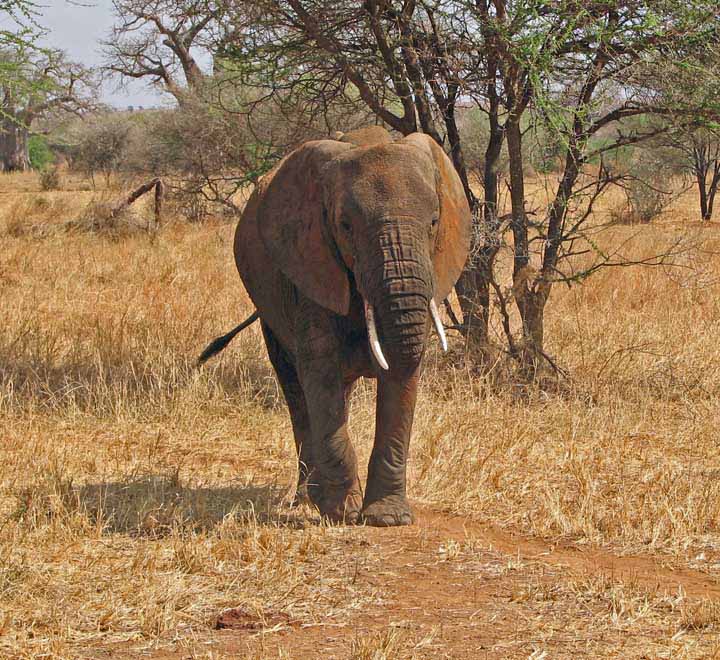
Had to get at least one picture, head on, with the ears wide

Yes, again they're that close -
and don't care about us at all.
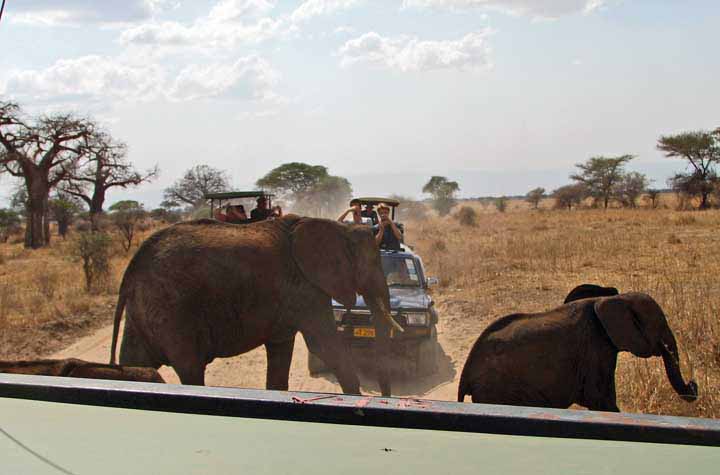
Dry doesn't begin to describe the environment.
Look at how wide this creek should be
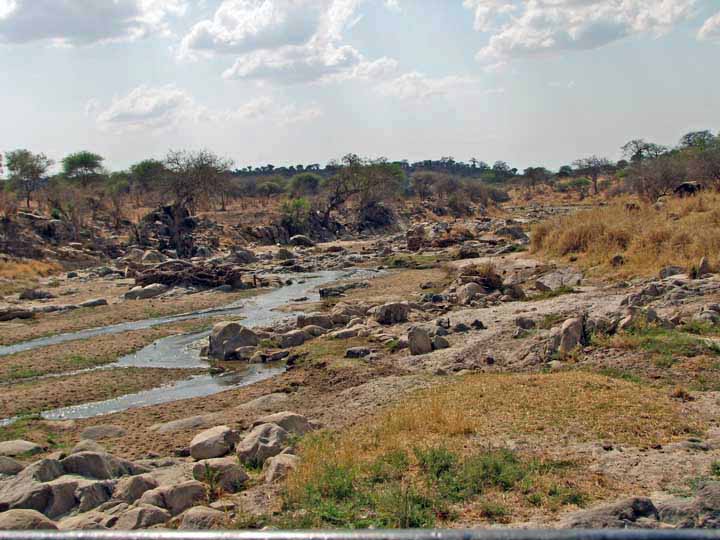
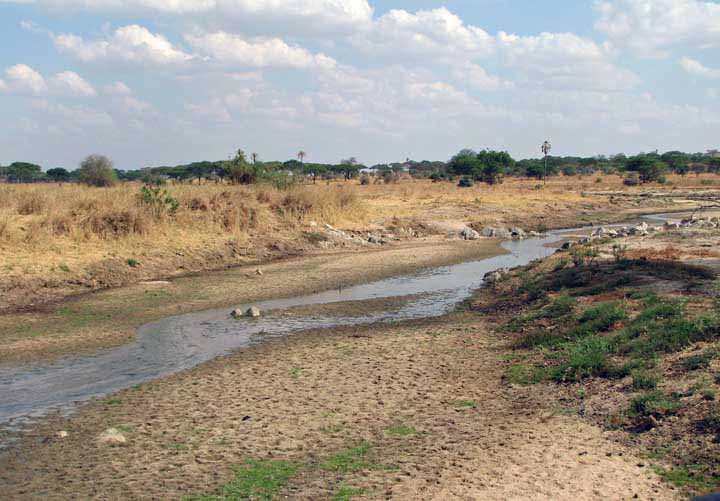
Our first Tanzanian Ostrich
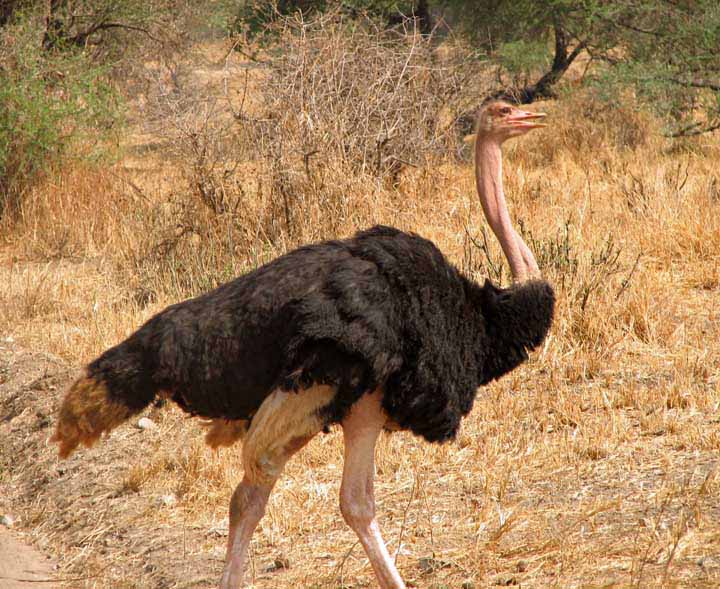
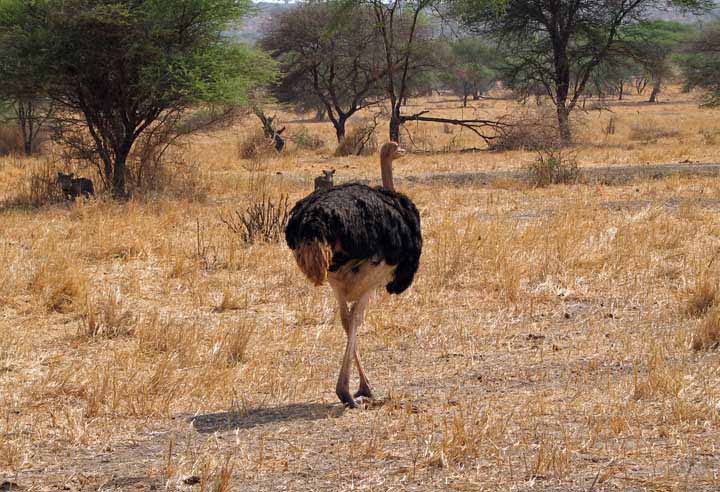
Animals seen at our lodge after lunch
A rock hyrax
This animal is closely related to - now get this - the elephant! Samuel tells us their digestive tracks are identical.

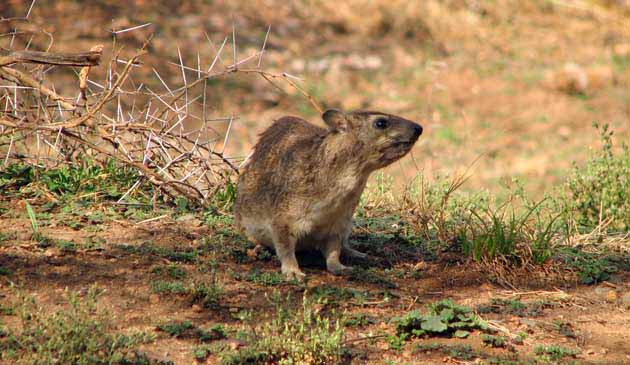
Two Iridescent Agama Lizards
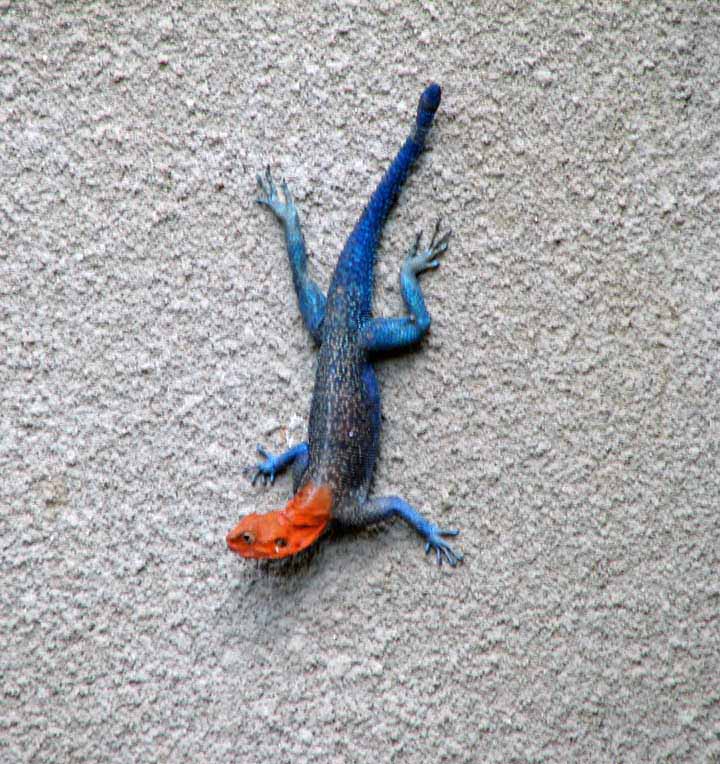
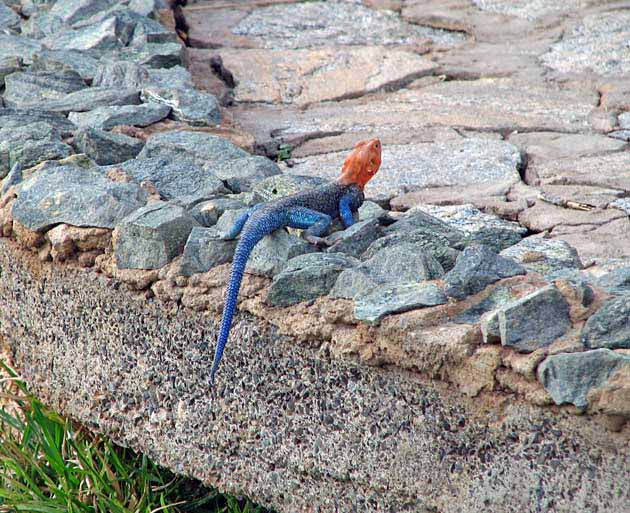
A _____________
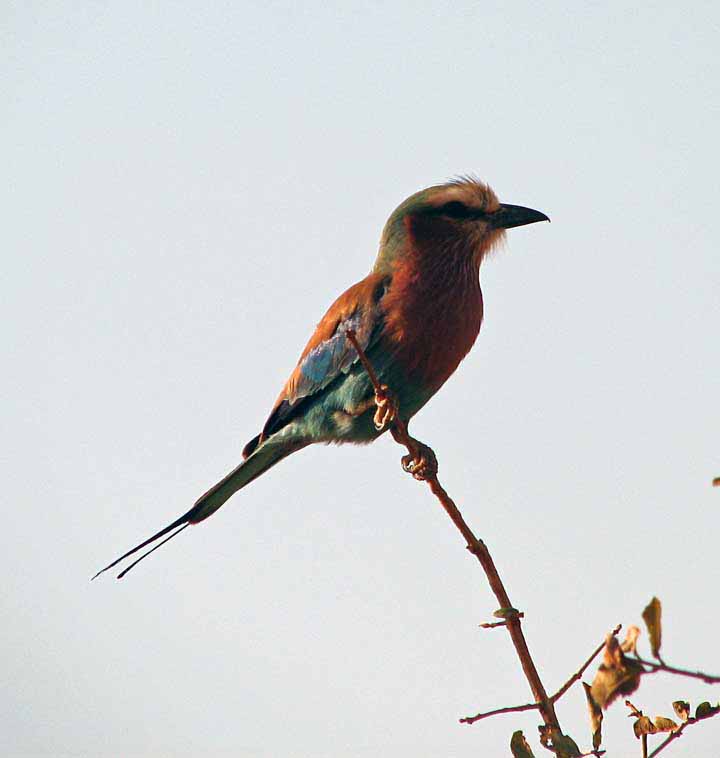
And back on safari, a month old baby elephant
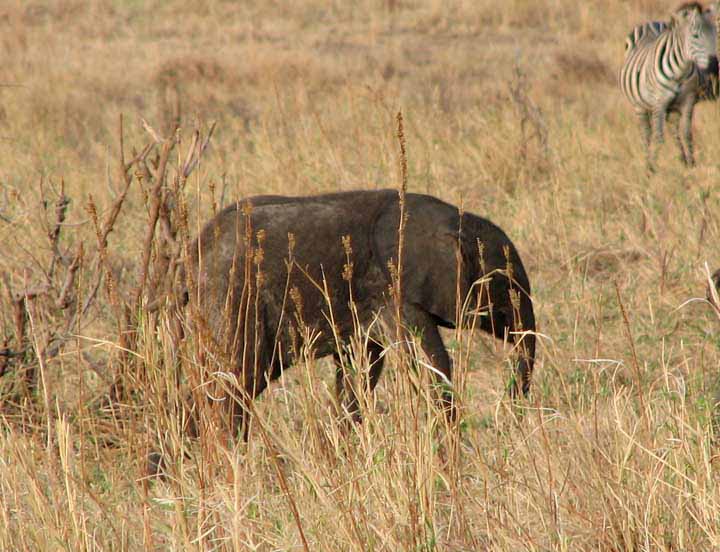

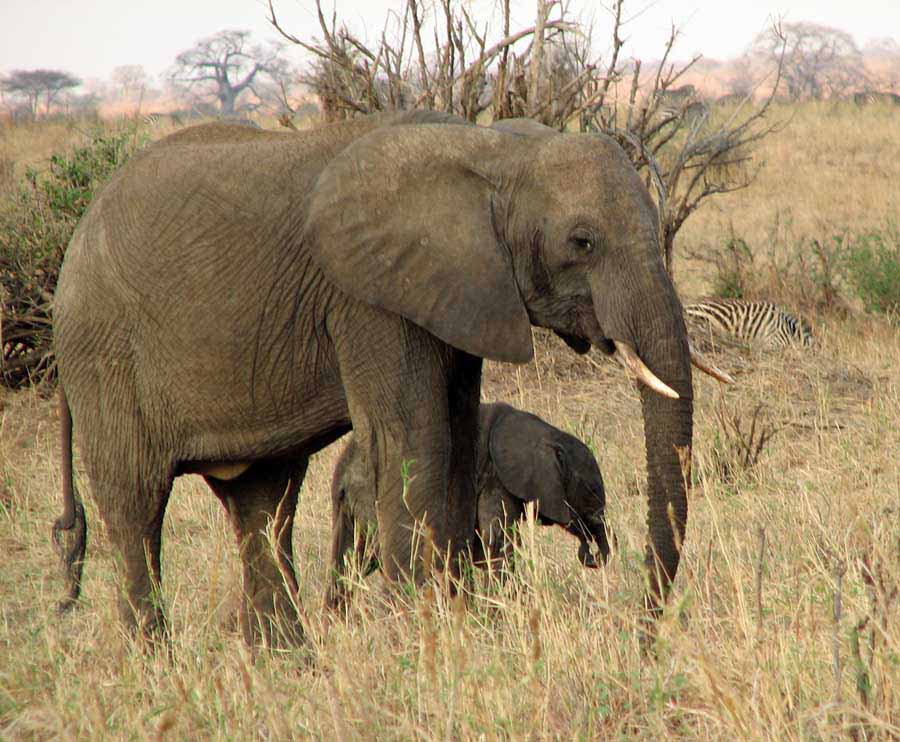
A Grant's gazelle and her baby

And we come upon another pair of lions on heir honeymoon
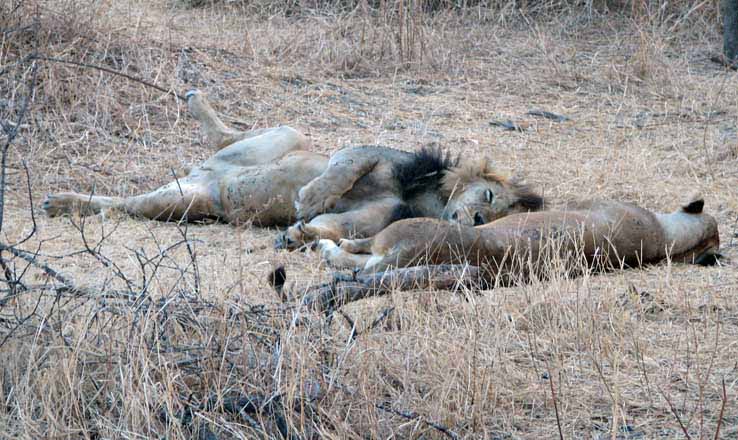
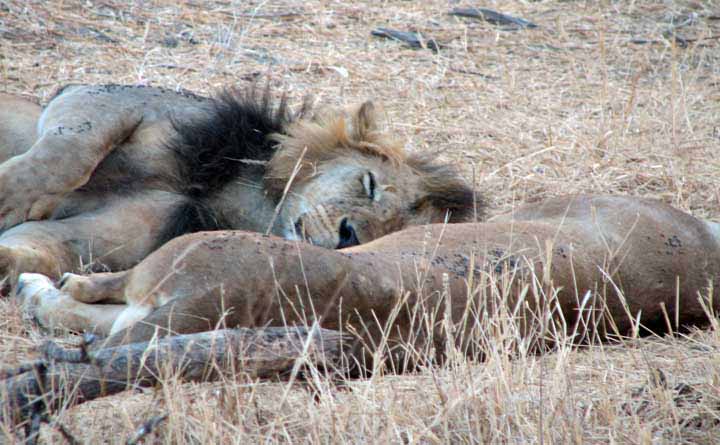
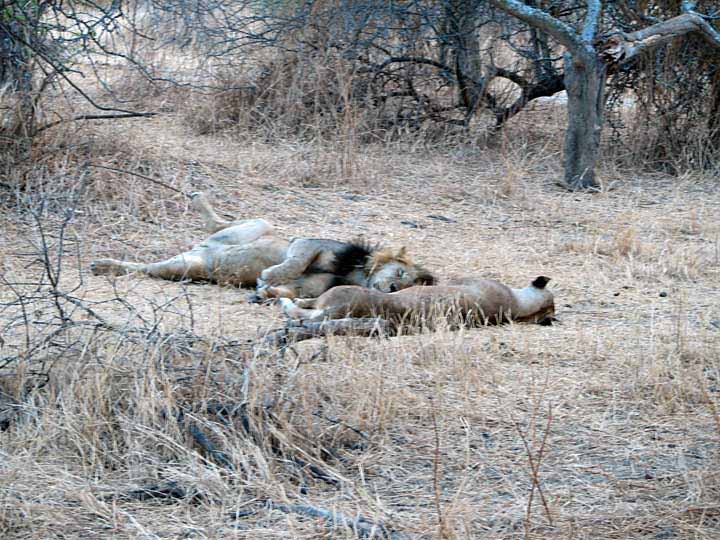

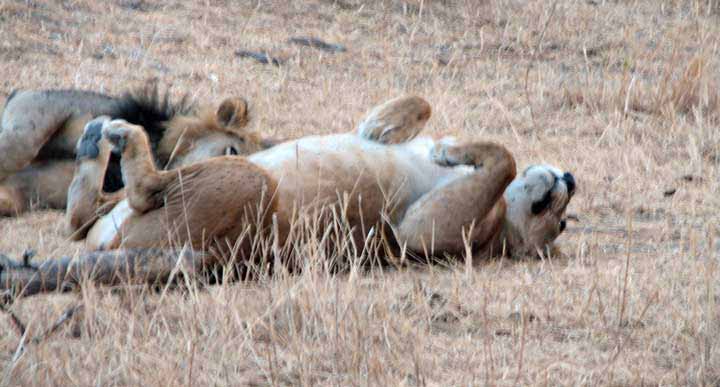

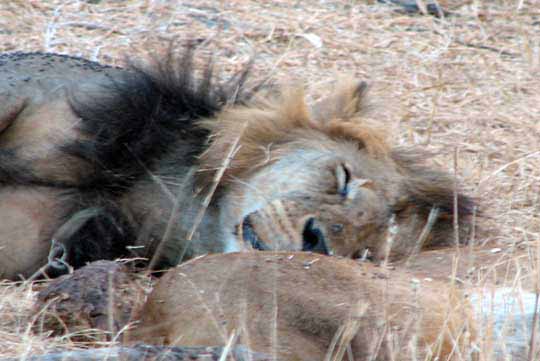
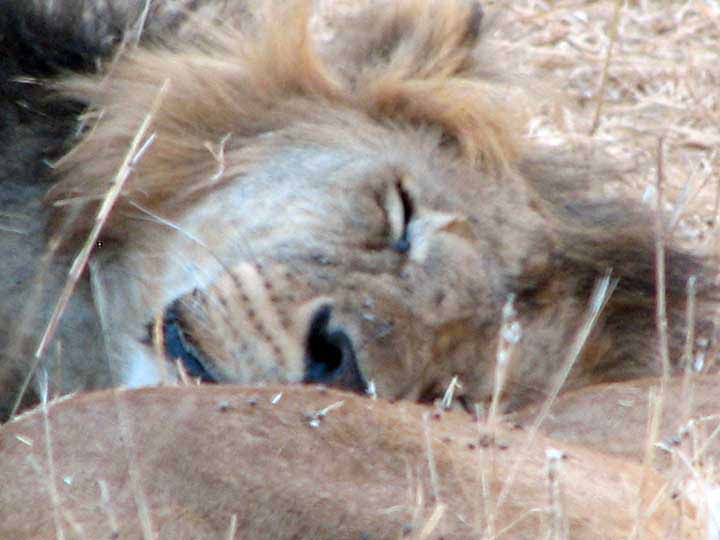
~ ~ ~ ~ ~ ~ ~ ~ ~ ~ ~ ~ ~ ~ ~ ~ ~ ~ ~ ~ ~ ~ ~ ~ ~~ ~ ~ ~ ~ ~ ~ ~ ~ ~ ~ ~ ~ ~ ~
OOPS! Maybe the pictures below are not appropriate for younger children
or easily embarrassed adults.
This was called "Jungle Porn" by our companions!
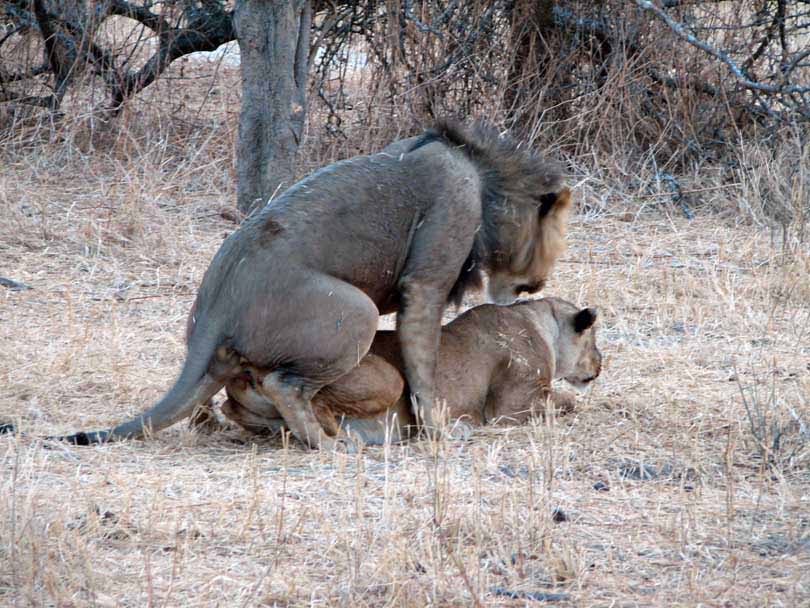

~ ~ ~ ~ ~ ~ ~ ~ ~ ~ ~ ~ ~ ~ ~ ~ ~ ~ ~ ~ ~ ~ ~ ~ ~~ ~ ~ ~ ~ ~ ~ ~ ~ ~ ~ ~ ~ ~ ~
These Boa Bob trees are so unusual, and in their way, handsome. They are bare all dry season, and/or during a drought. The natives can tell when the rainy season is coming because the trees begin to get small leaves. Following this, and immediately before the rains, they flower.
During a recent war between tribes, warriors would hide their families in these trees to prevent them from being discovered and killed. The trees are hollow inside, and one cannot tell how old they are, both because they are hollow and because the exterior appears to be made of hundreds of vines, rather than solid wood.

This one has been opened by elephants hoping to find water

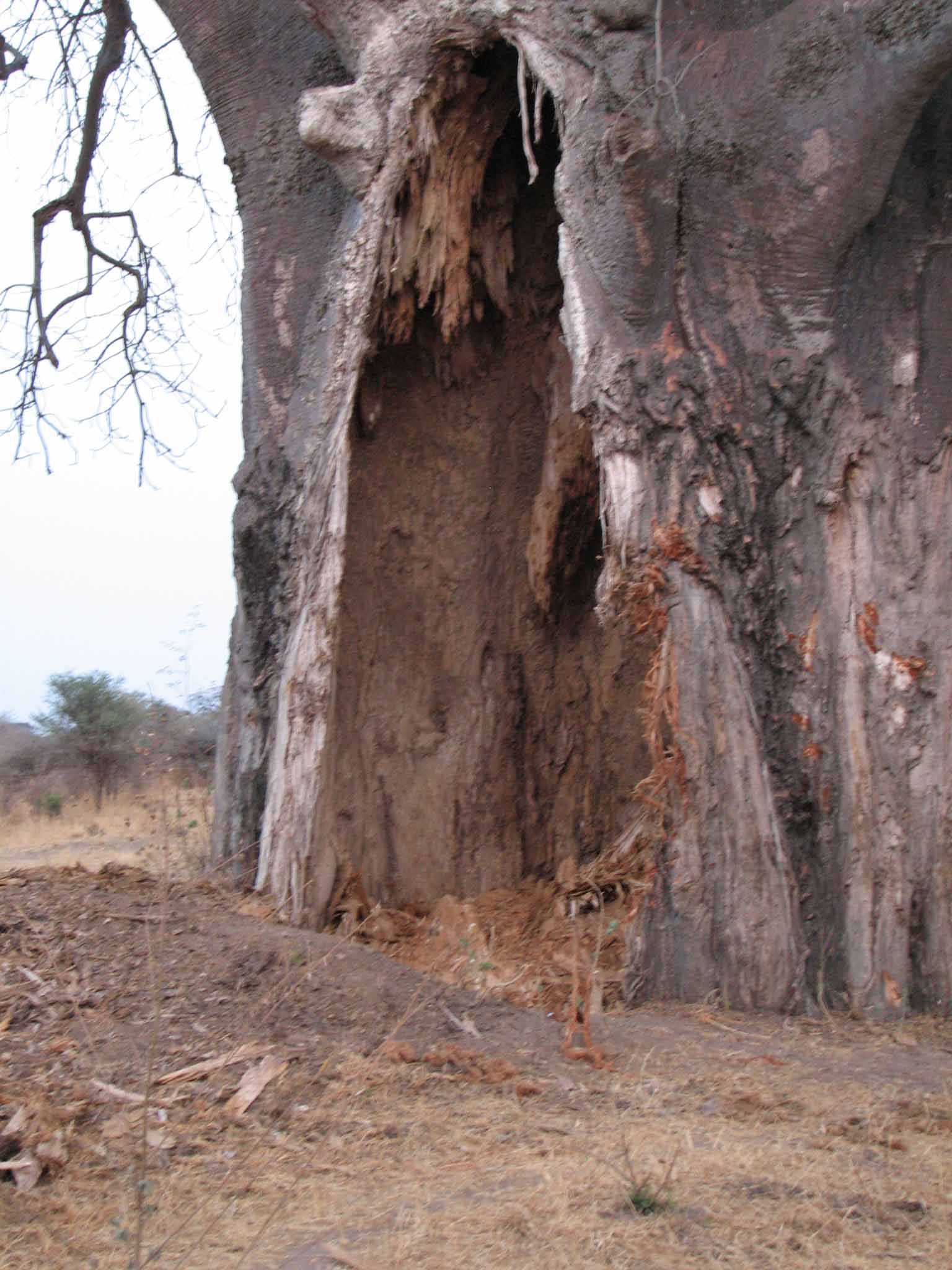
This one, close to the lodge has an opening in it - maybe some residents?
Wouldn't stick my hand in there if I were you.


_________ Guinea
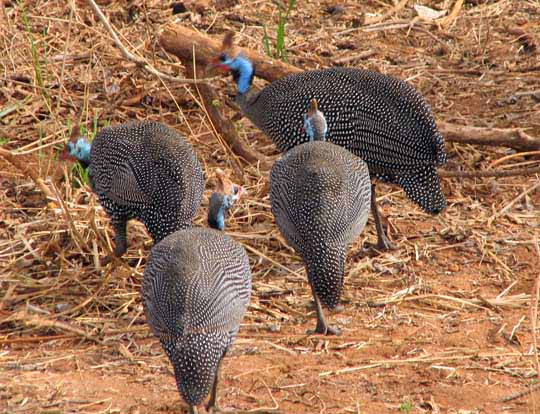
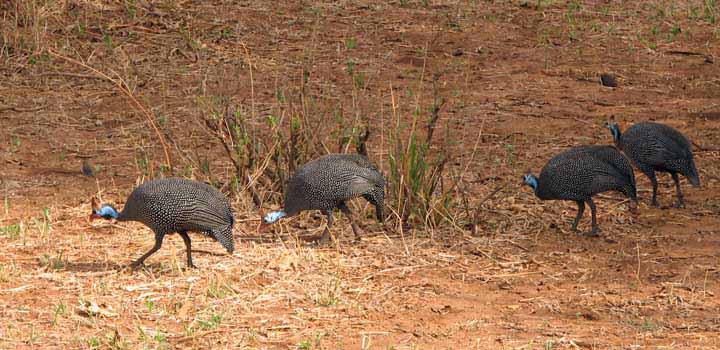
A _________ Grouse
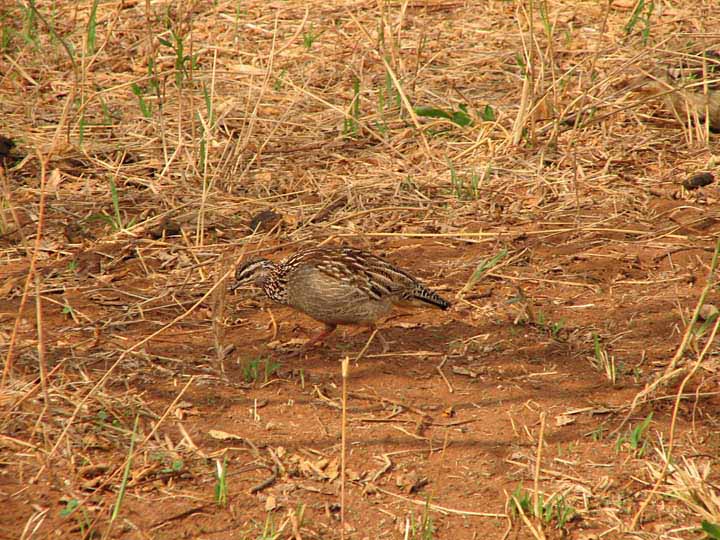
Yes, lions in and around the bushes
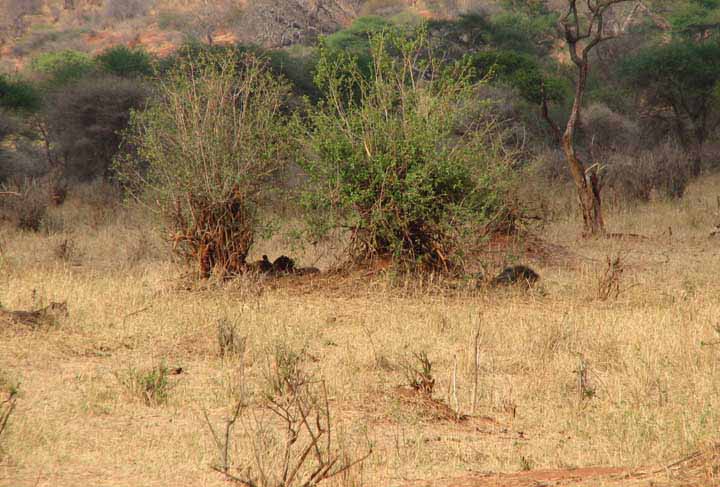
A male to the right, a female making a feast of a fresh kill
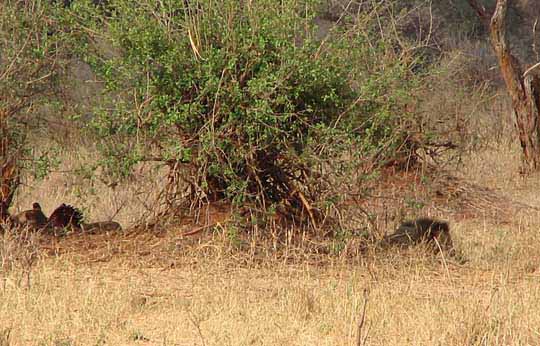

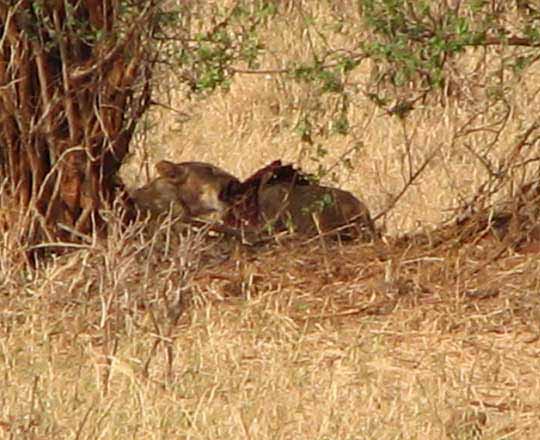
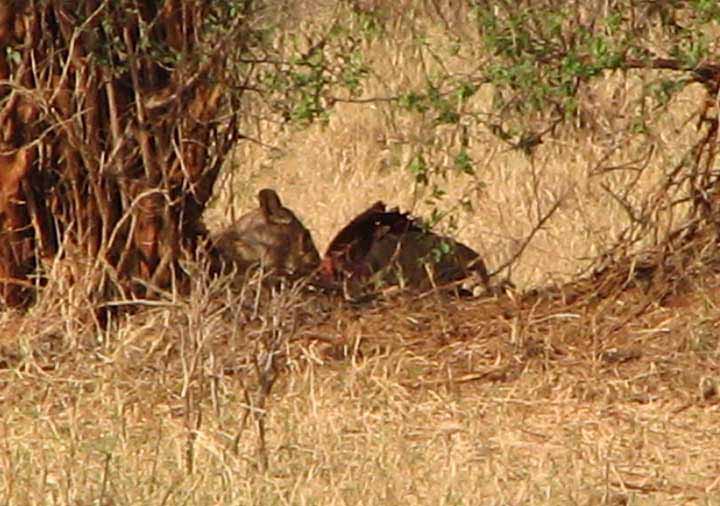



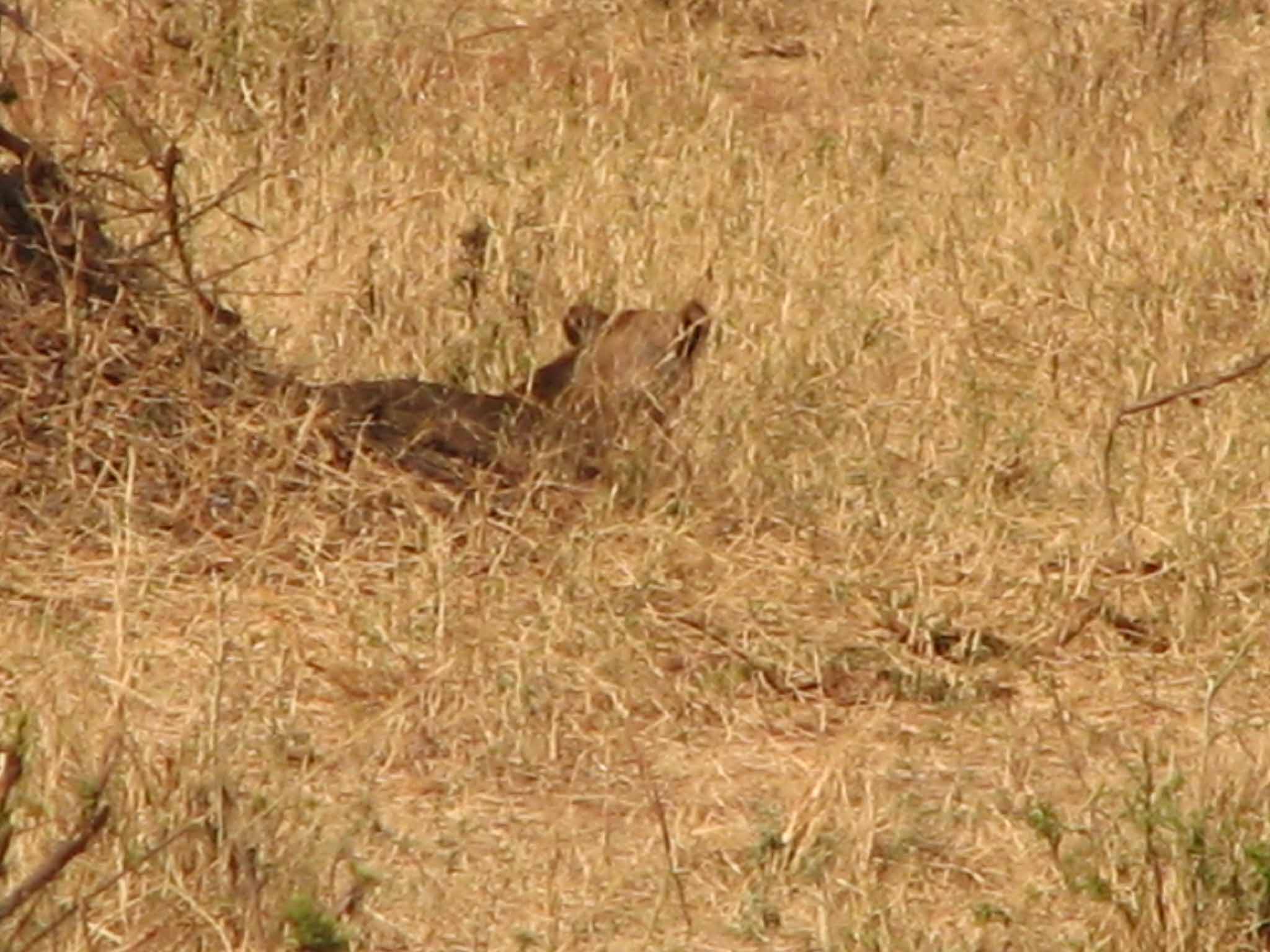
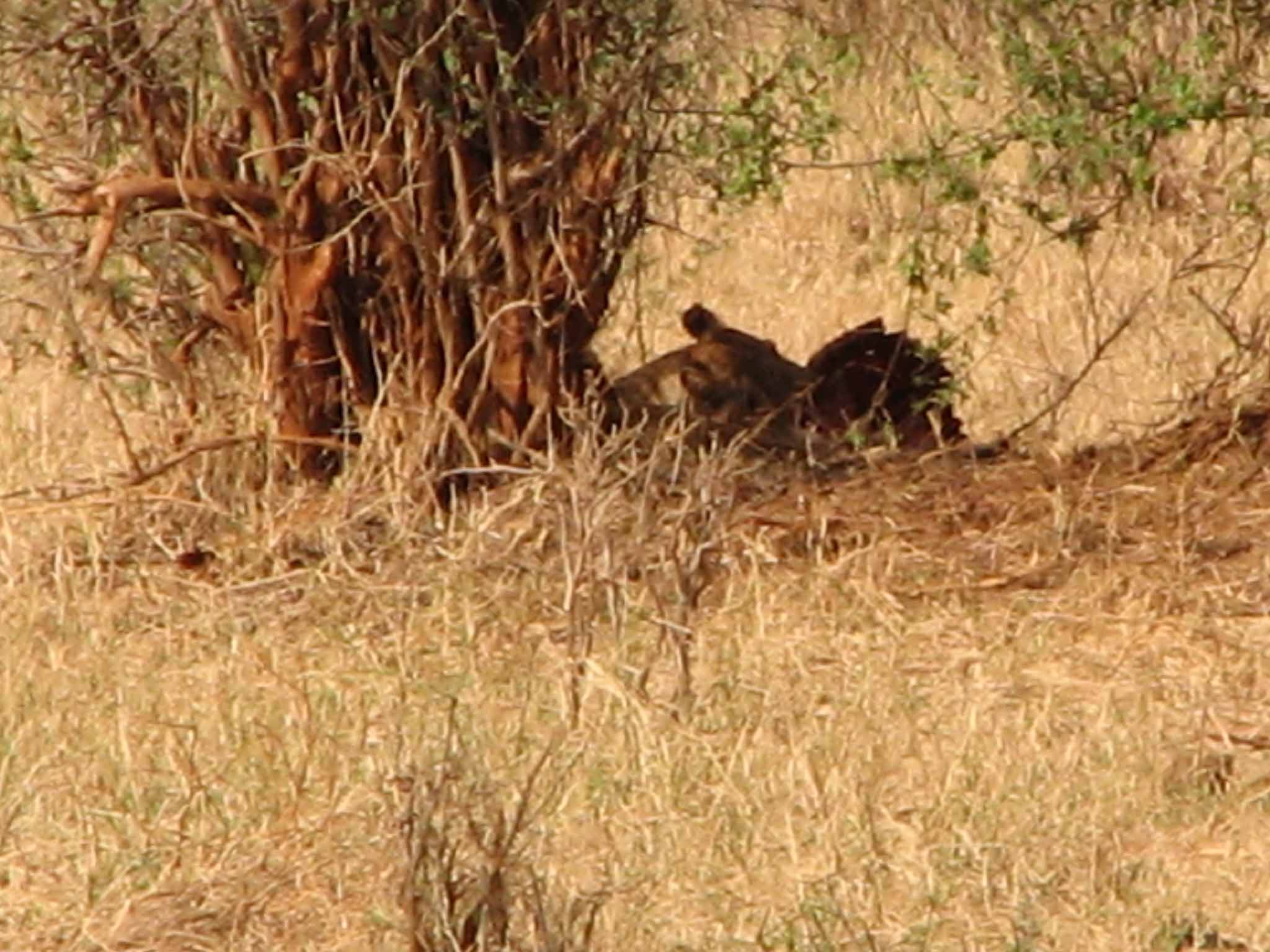
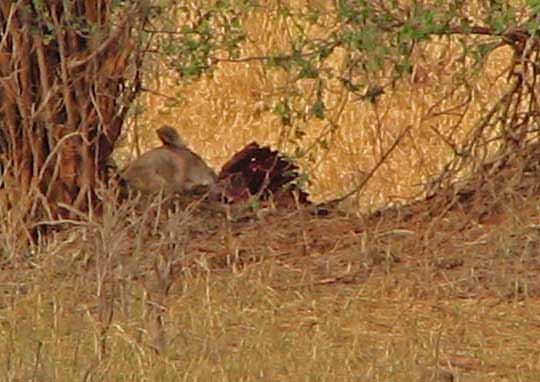
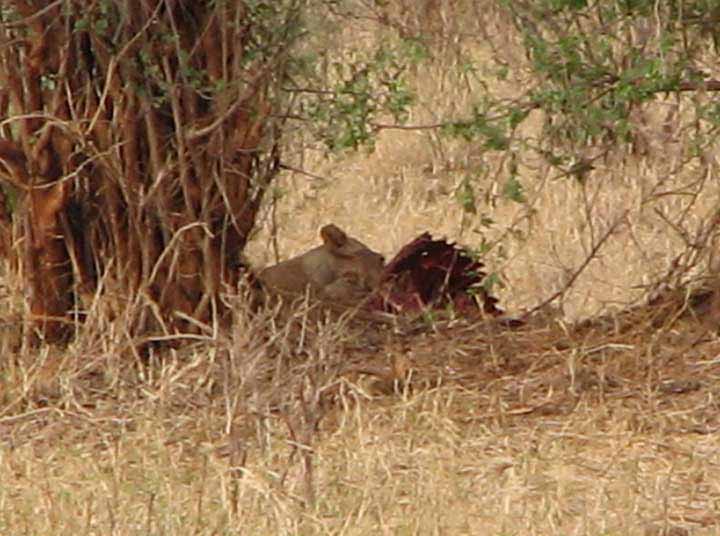
 She's
done a pretty good job on the kill
She's
done a pretty good job on the kill
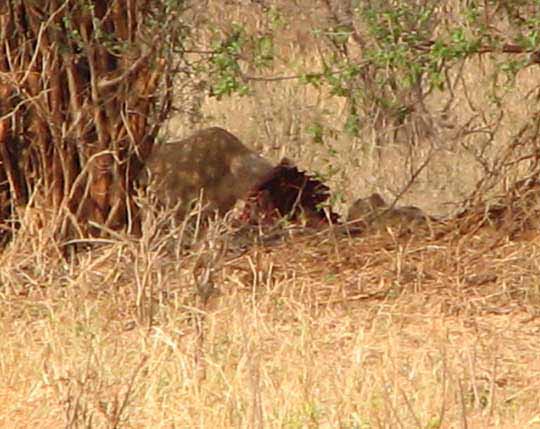
He had eaten earlier and is having a post meal rest
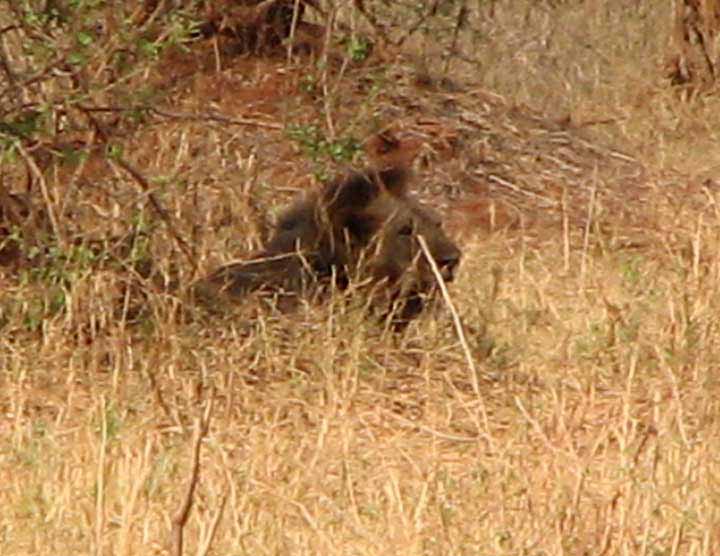
A herd of Wildebeest

Game trails pattern the plain
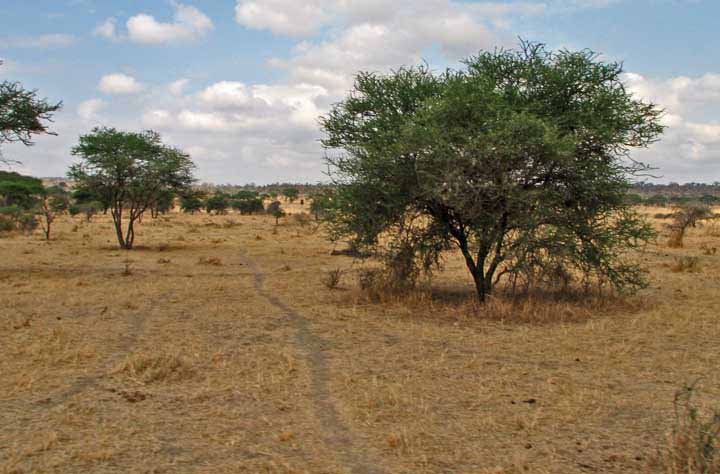
A flock of _________ Guineas
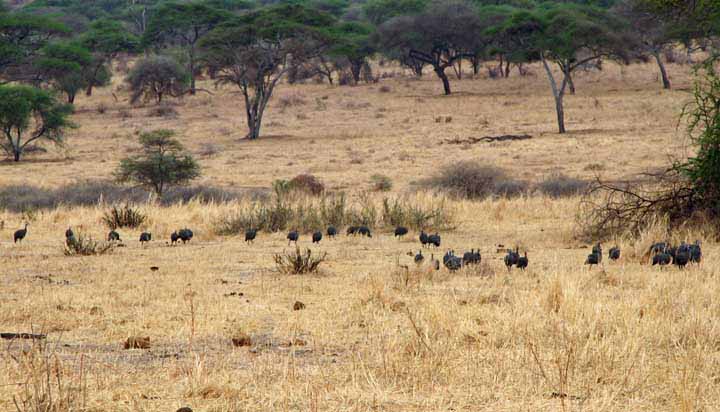
A lone hornbill.
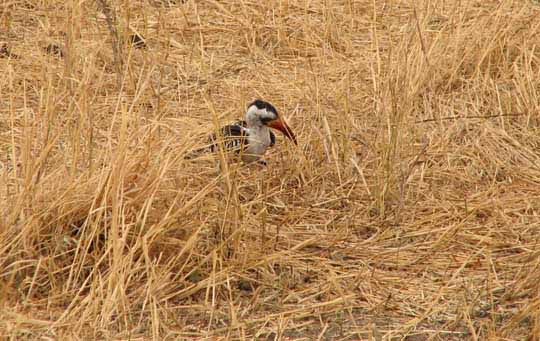
Elephants in the very dry river bed.
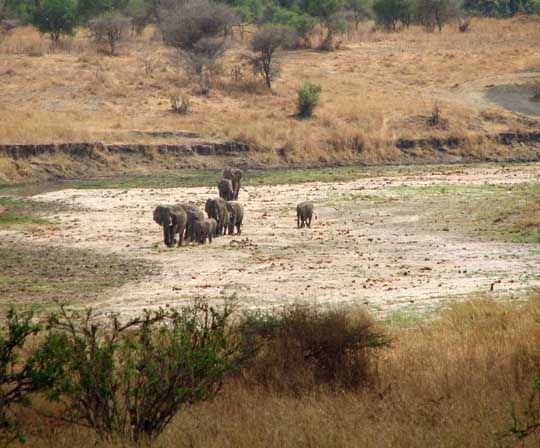
A ___________________ in the same dry river
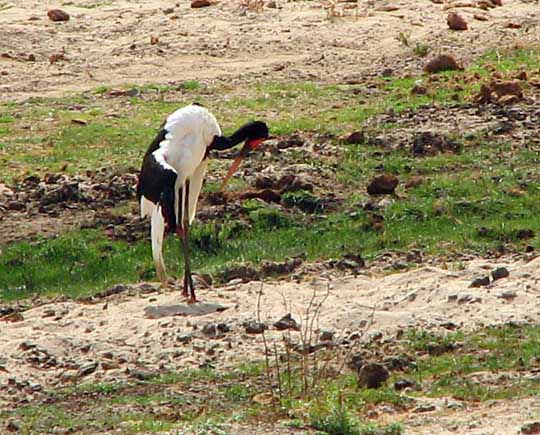
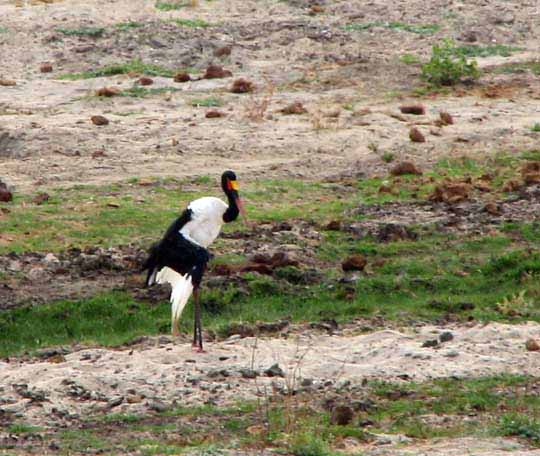
Roads, dry and dusty - BUT - smooth! through the Park

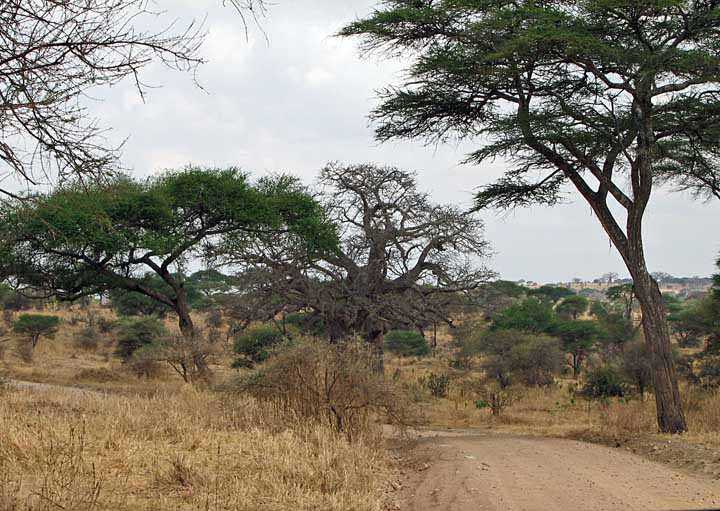
As we went by this large rock outcropping we thought we saw movement.
Samuel backed up and here's what we saw.
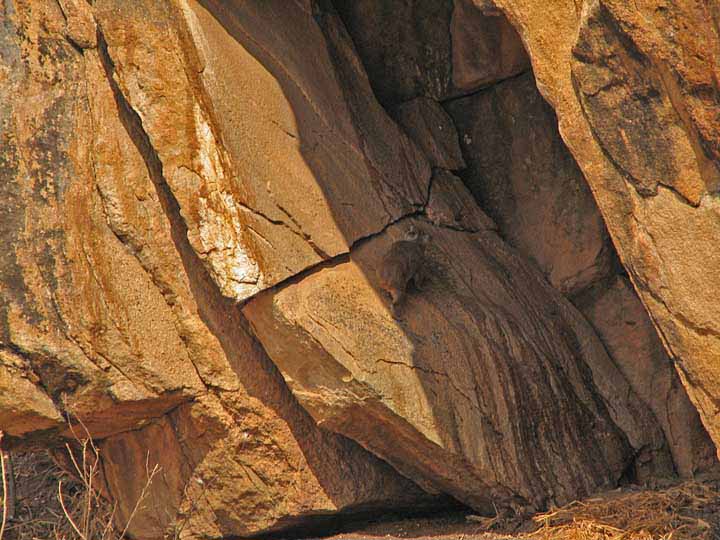 See
anything?
See
anything?
How about now?
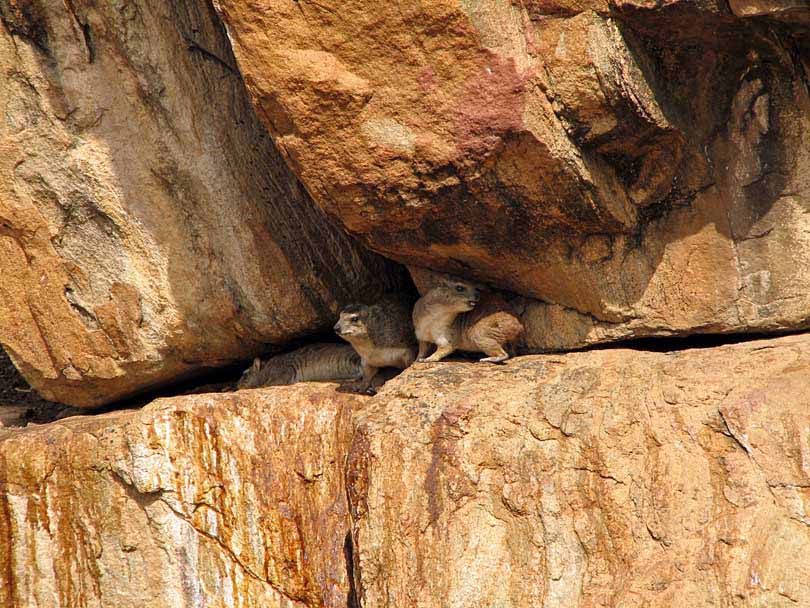
These little guys are called Rock Hyrax .

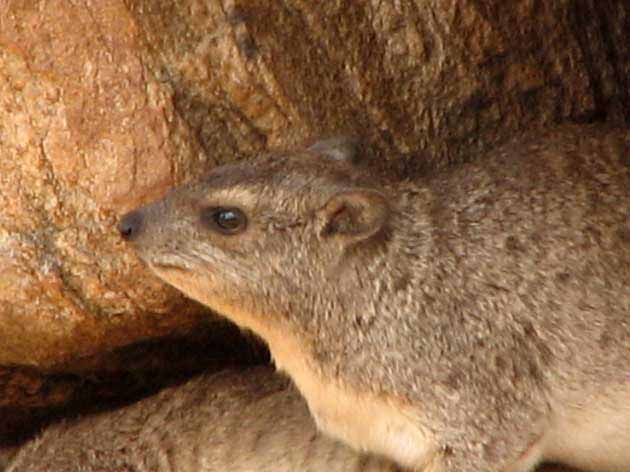
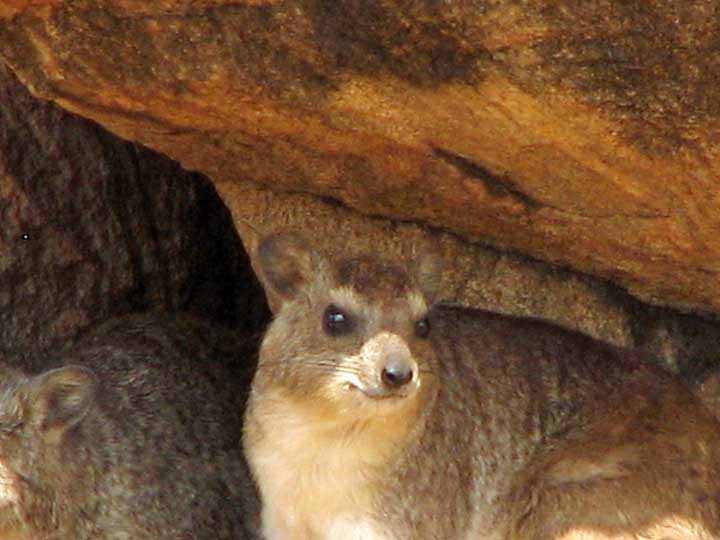
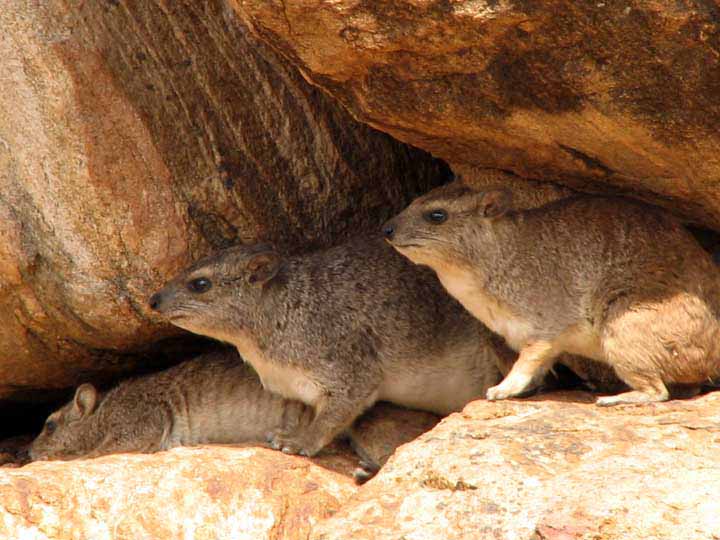
Ugly - Ugly - Ugly!
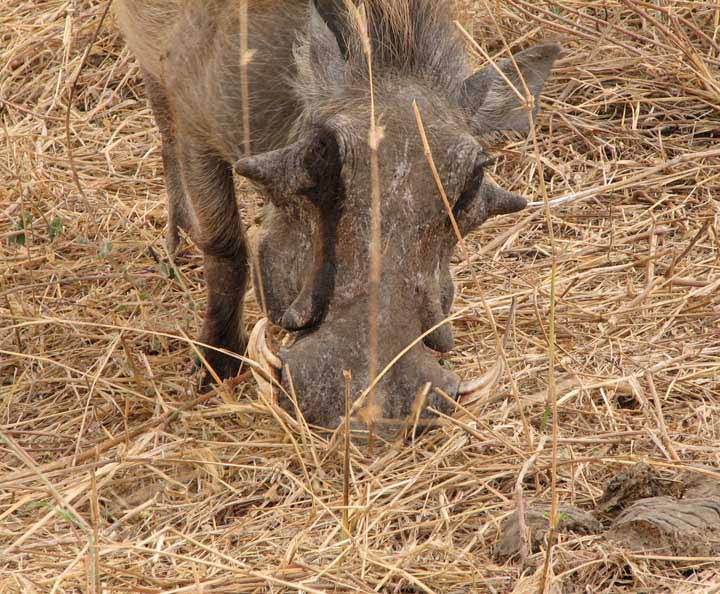
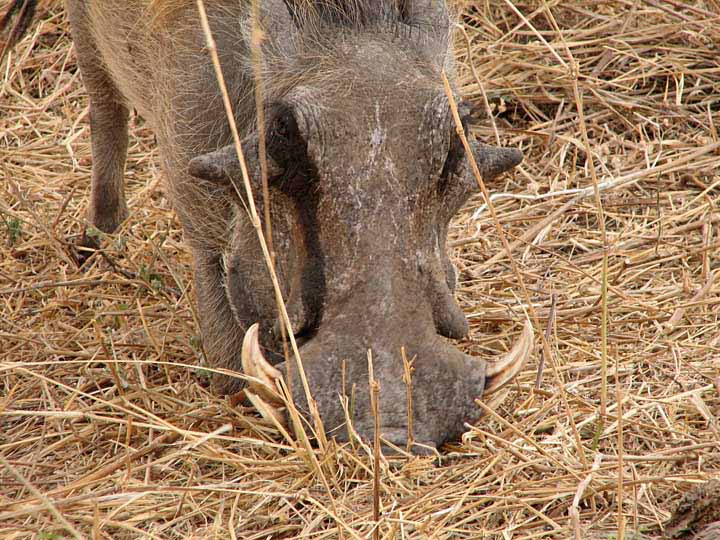
An entire pride of male Cheetahs
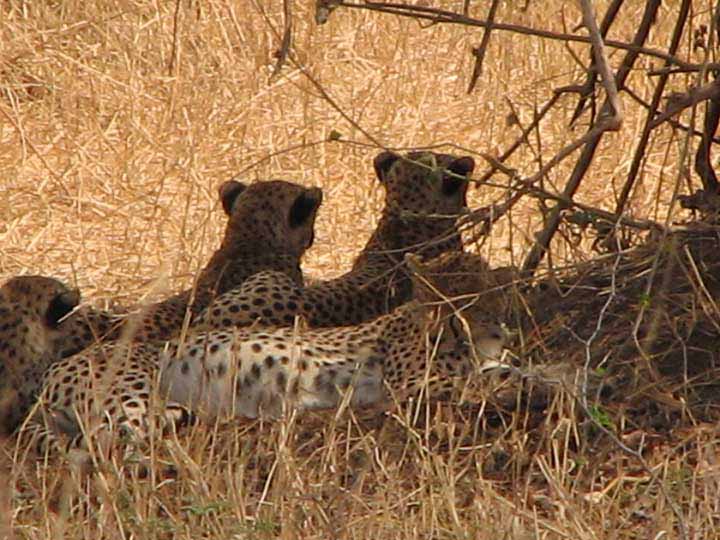

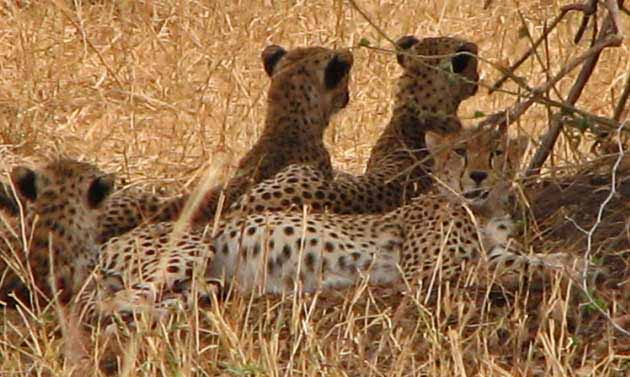
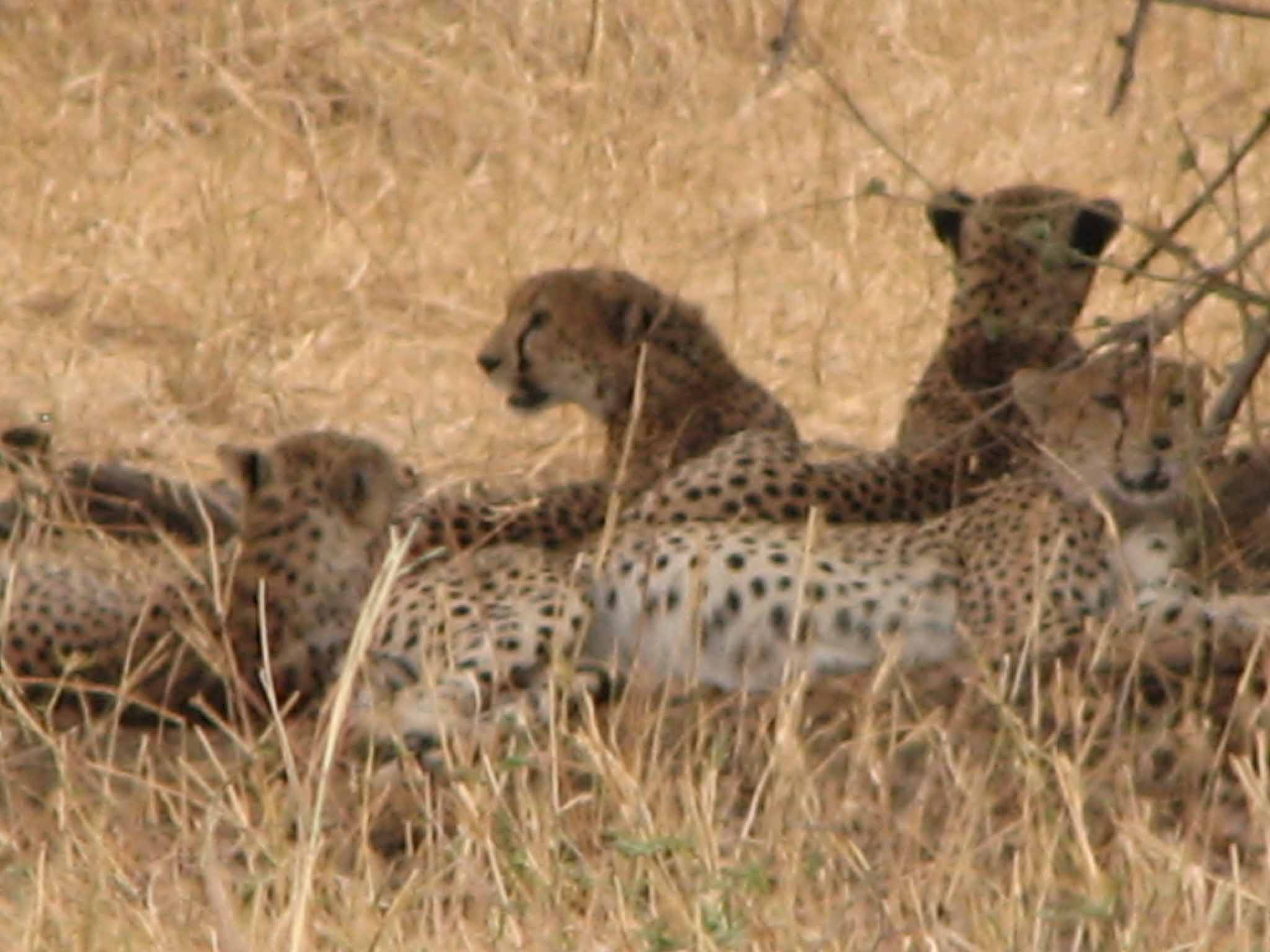

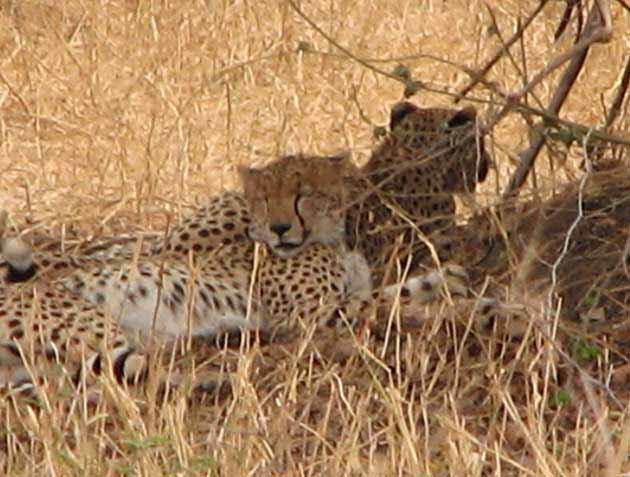


And again, we watch the watchers, watching
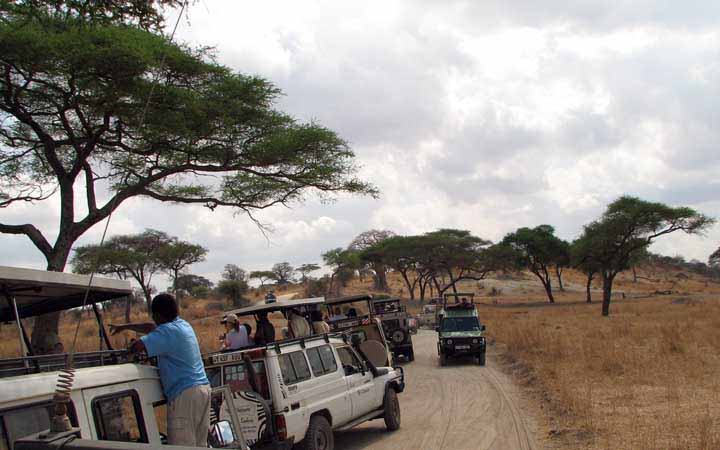

A female Ostrich
 Her male friend
Her male friend
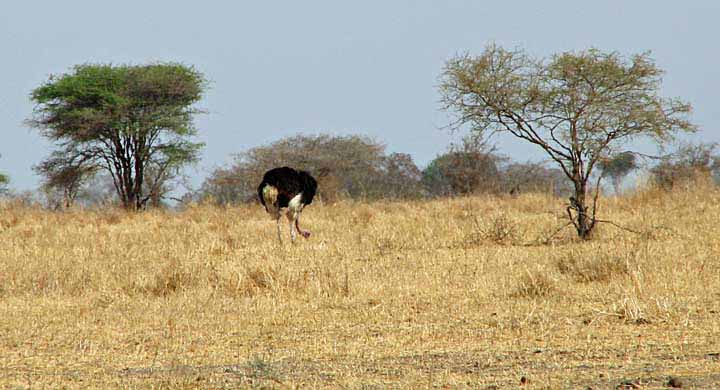

Its difficult to demonstrate just how large these birds are

Elephants are much more destructive than people know - at least us.
You can always tell where they have been
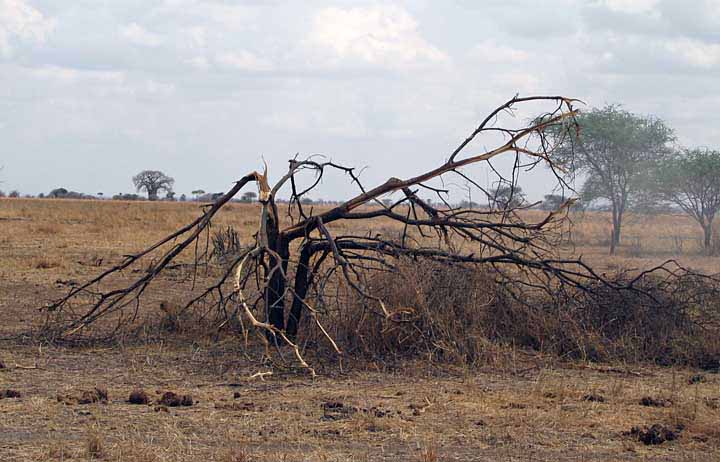
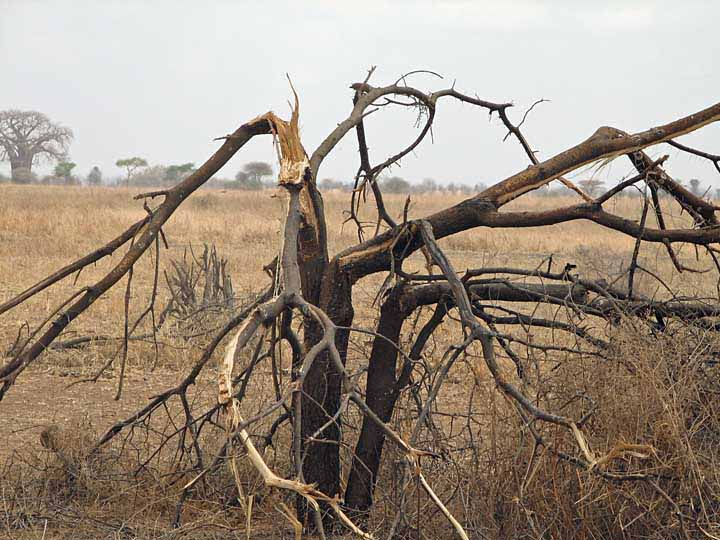
A long line of Wildebeests on the move
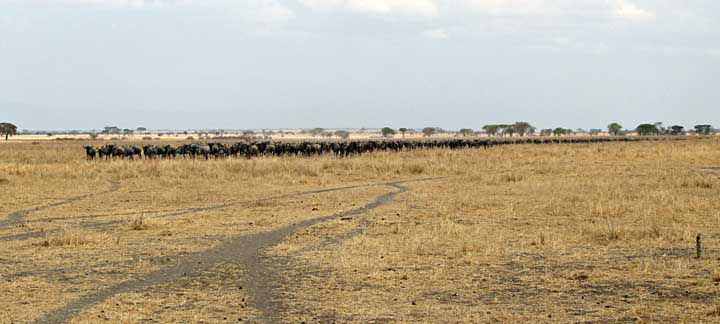
Again, a stand alone hornbill.

Our friend Samuel softly explaining what we see and unusual facts
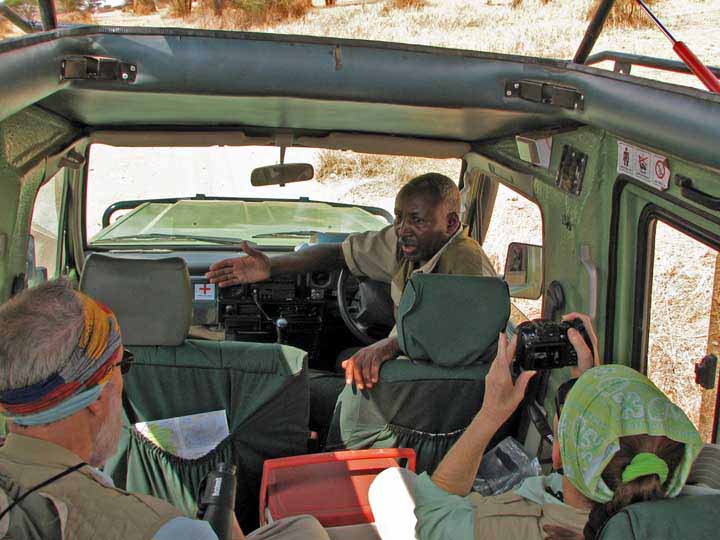
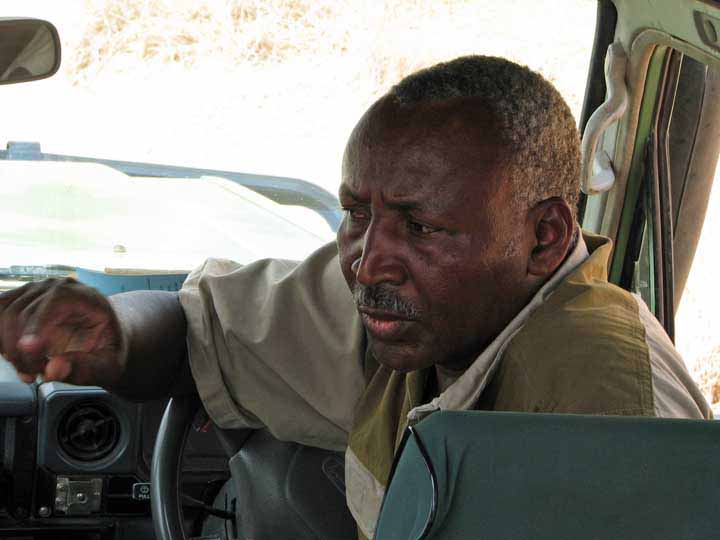
We see these wonderful boa bob trees almost everywhere


Another one with a hole through
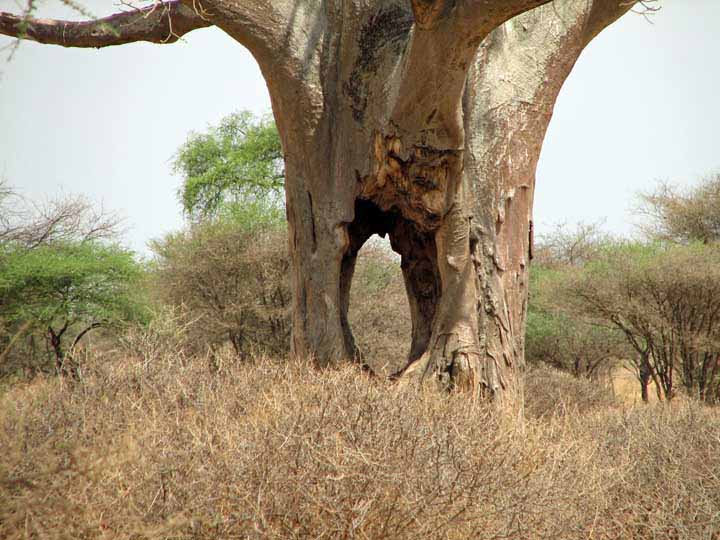
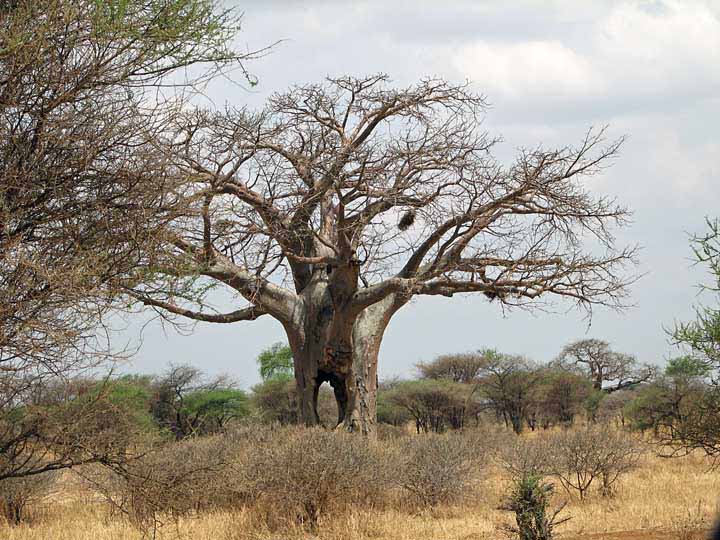
Rain coming according to the boa bob Tree - see the leaves?
This is the only one of hundreds we've seen with any leaves
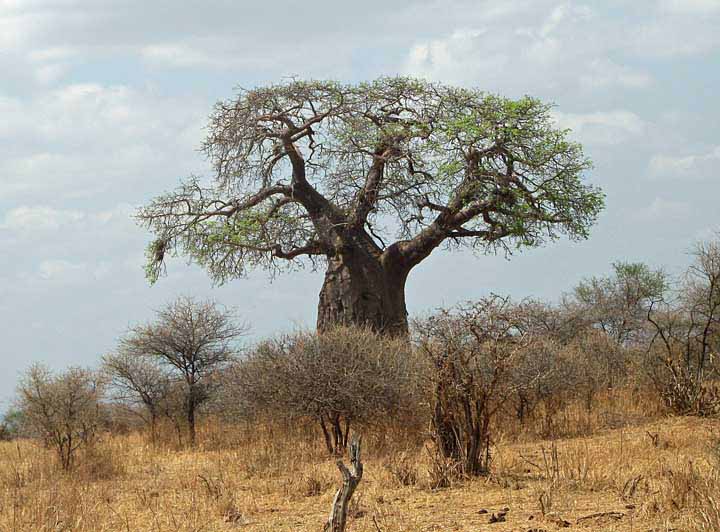
Everyone hopes the tree knows!
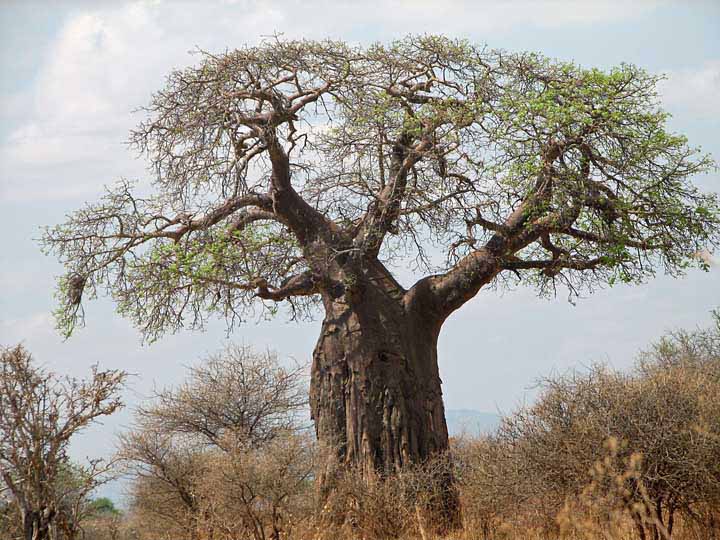
A
____________ Hawk, feathers blown by the wind

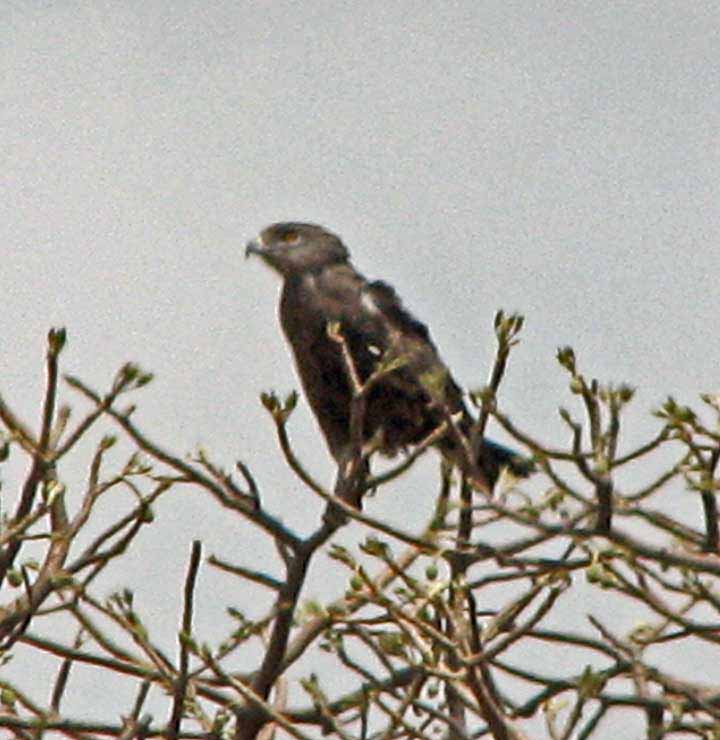
A troop of Baboons walk slowly by
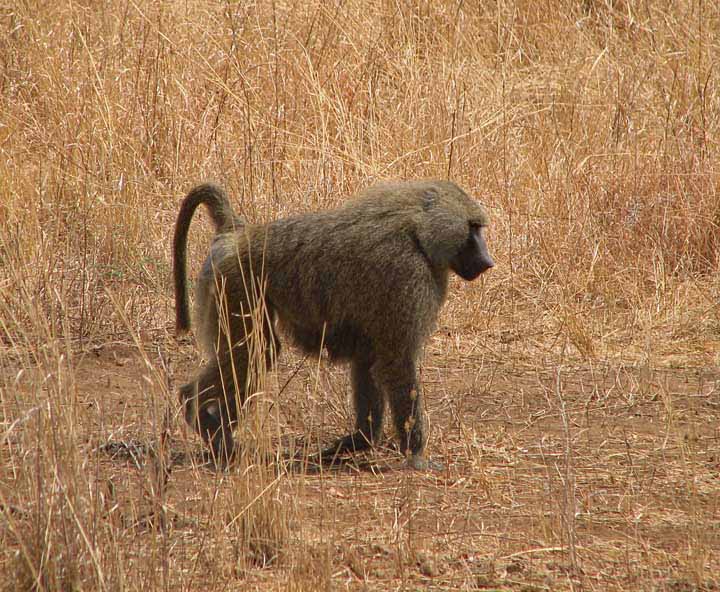

Baby get a ride - under
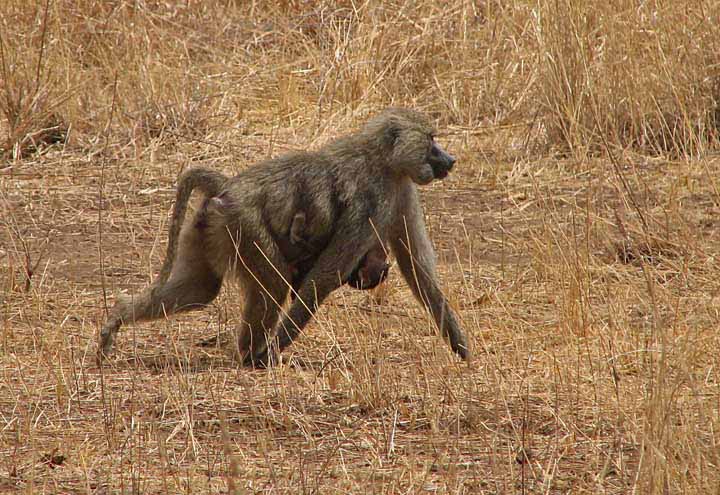
This baby gets a horse-back ride
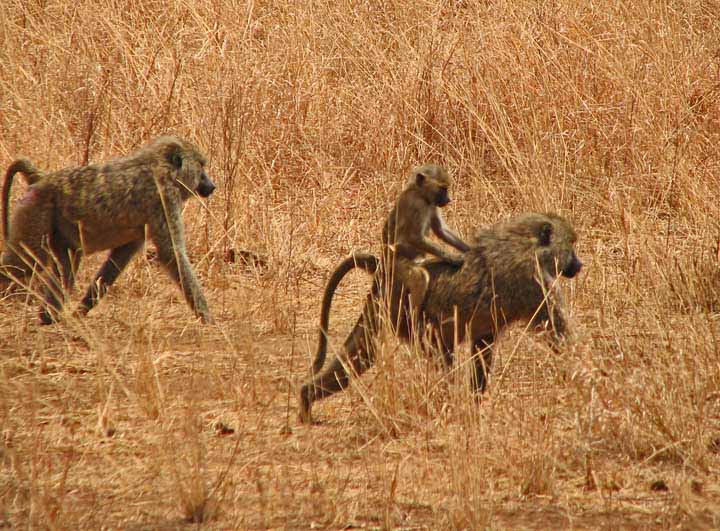
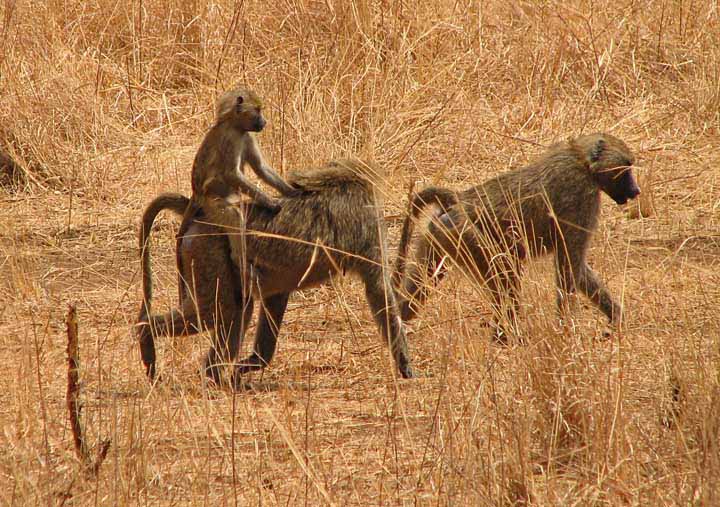
Go ahead, sit on the road, we don't seem to bother you
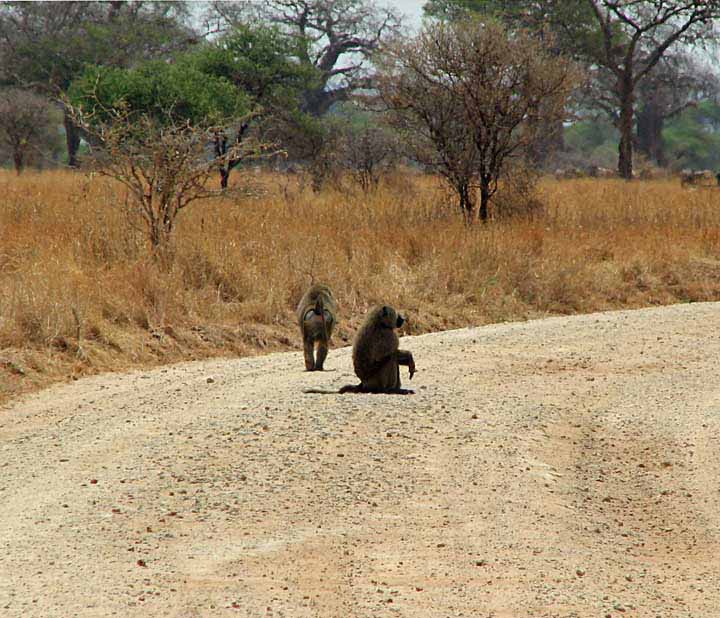

The alpha males follows to make certain there's no stragglers

Our lodge

Just inside the entrance to the lodge grounds

The dining room The central hall
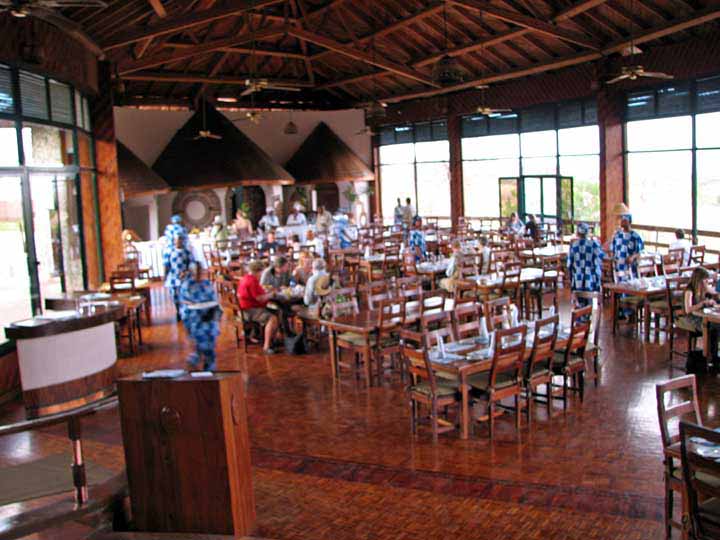
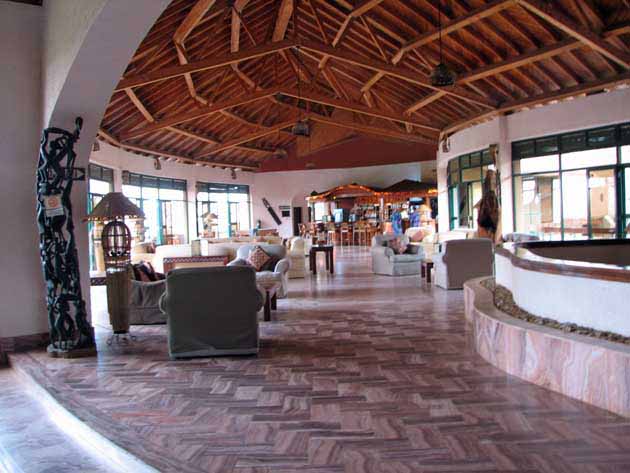
The stairway to the lower floor The hall to the gift shop and lounge
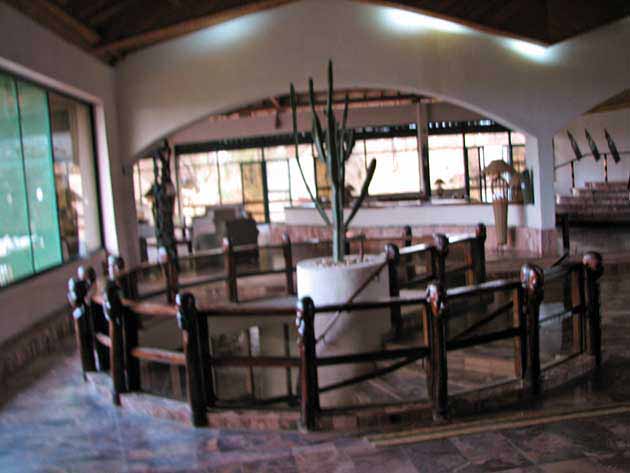

The front entrance to the grounds The fountain in the reception lobby
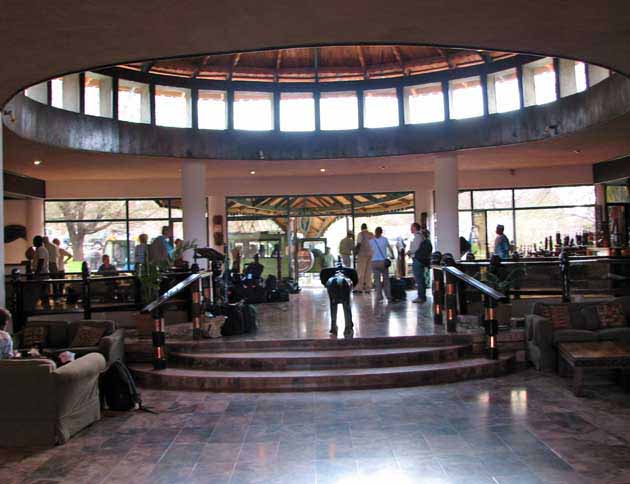
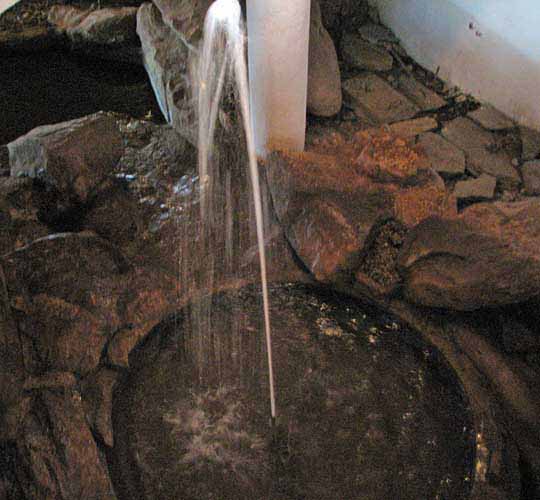
The vaulted ceilings The cave onyx floors
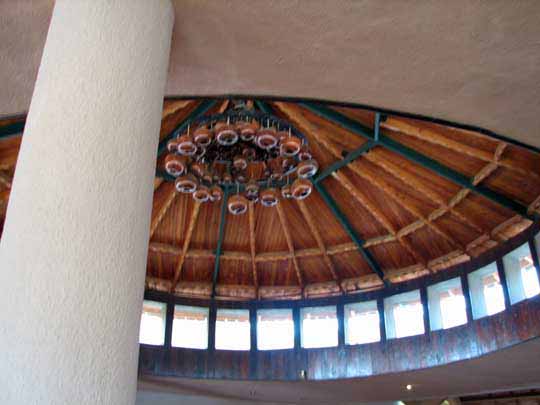
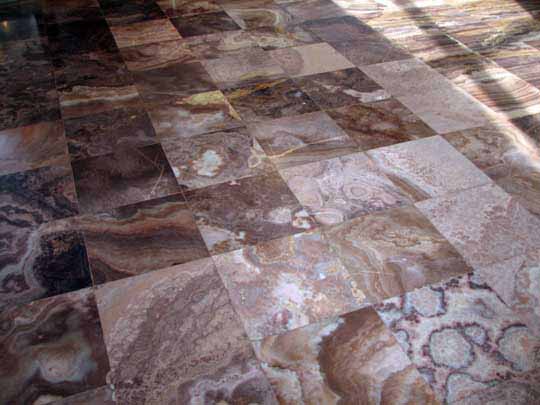
The Fire Alarms
Every lodge at which we stayed had emergency area where everyone was to gather should there be a fire,
however, these were the only lodge fire alarms we saw anywhere -
a hand cranked siren on the left, and a auto wheel and hammer
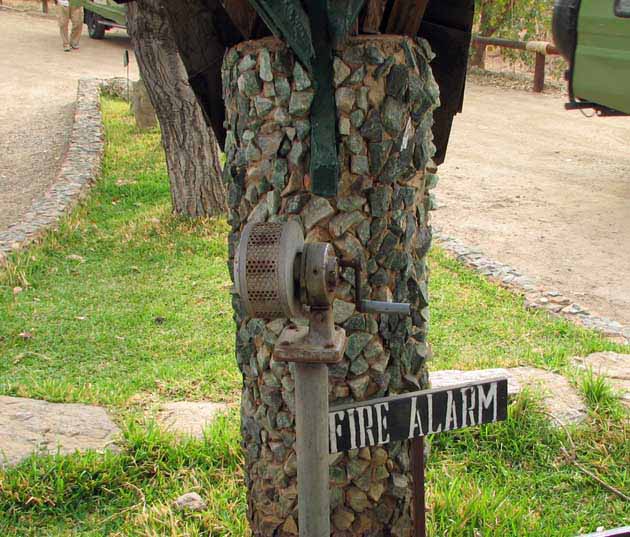
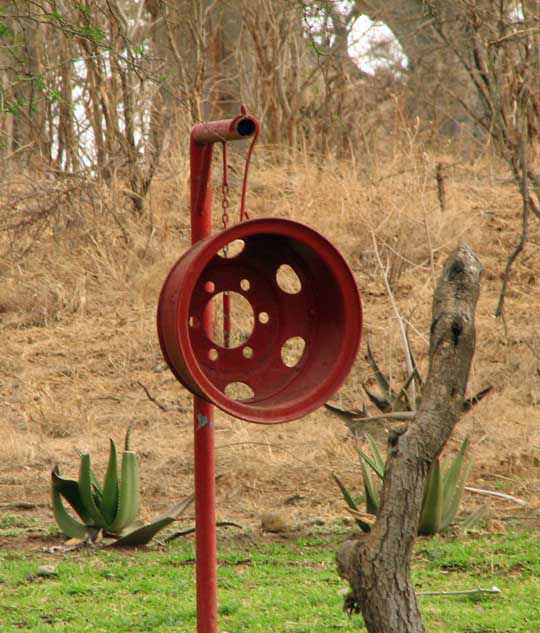
An outdoor luncheon An indoor breakfast
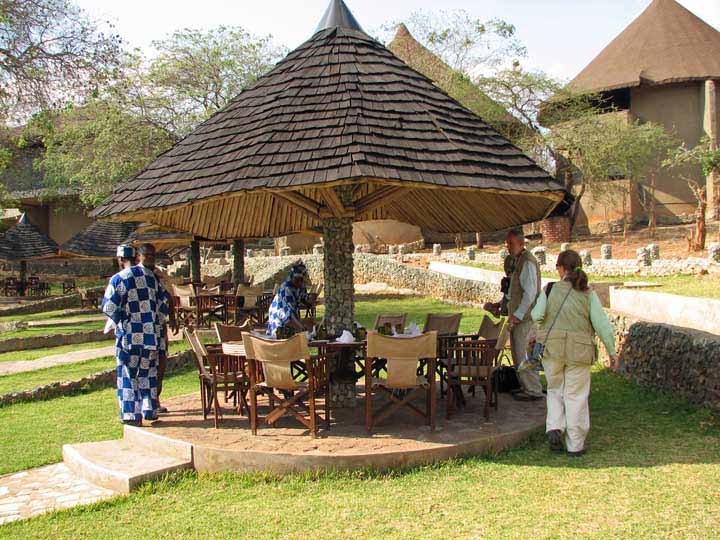
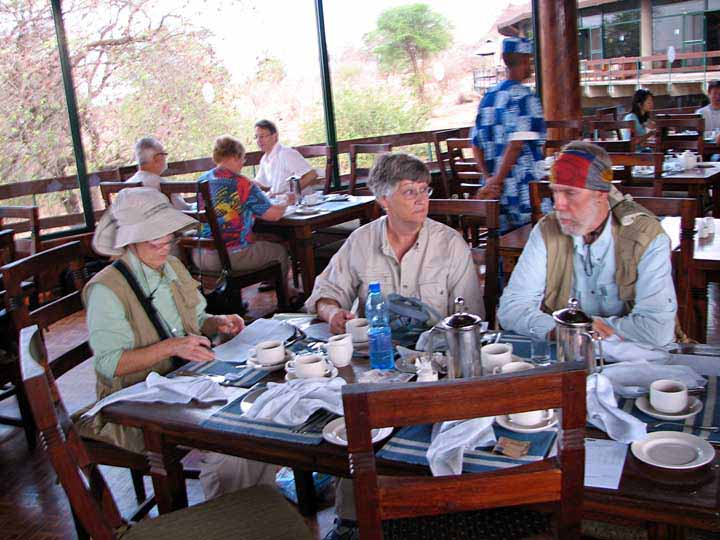
~ ~ ~ ~ ~ ~ ~ ~ ~ ~ ~ ~ ~ ~ ~ ~ ~ ~ ~ ~ ~ ~ ~~ ~ ~ ~ ~ ~ ~ ~ ~
On to Lake Manyara